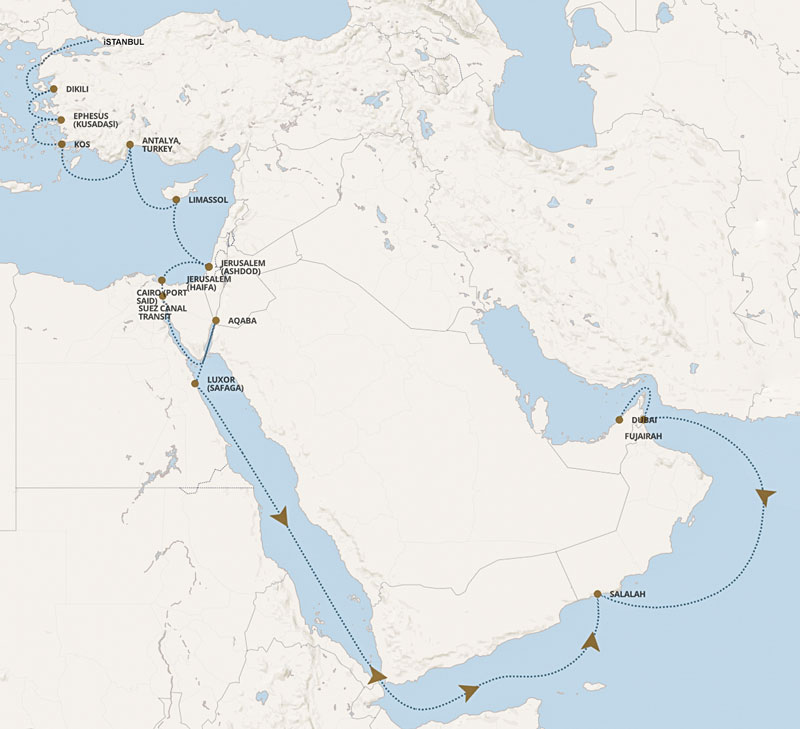
Istanbul to Dubai
October 31 - November 21, 2022
Mike and Judy Henderson
I've been looking for a cruise that would take us to Istanbul and Ephesus, and found this one with Regent Seven Seas. It duplicates a few places we've already been in Israel, Jordan and Egypt, but otherwise offers what I was looking for. It also takes us to Dubai, which we both would like to see, and through the Suez canal. This trip will take us to three continents: Europe (in Istanbul), Asia (in Turkey, Cyprus, Israel, Jordan and the UAE), and Africa (in Safaga).

The map of the whole trip doesn't show enough detail, so I'm only going to show the full map on this first page. For later pages I'll include a detailed map for the part of the trip I'm describing.
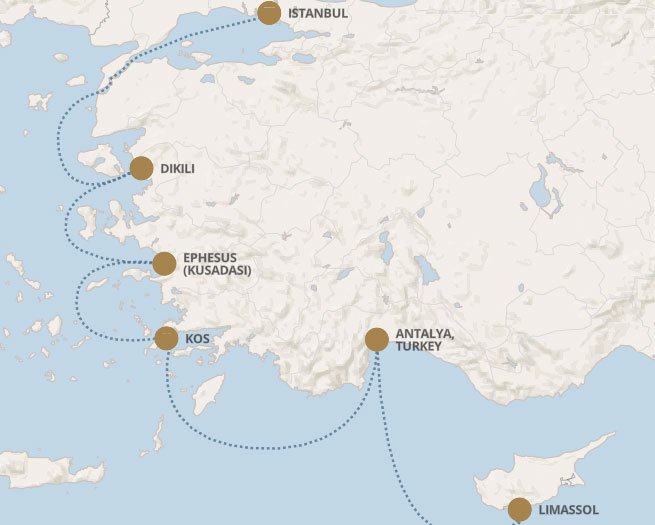
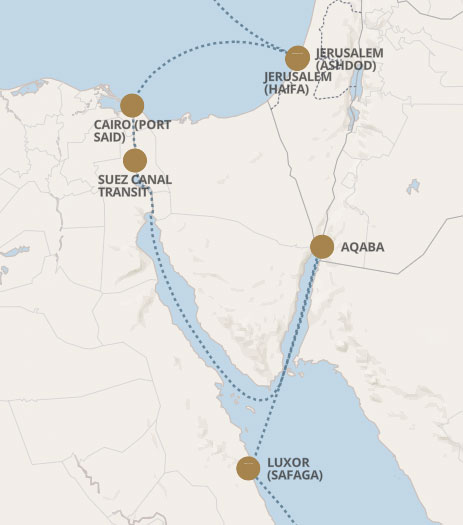
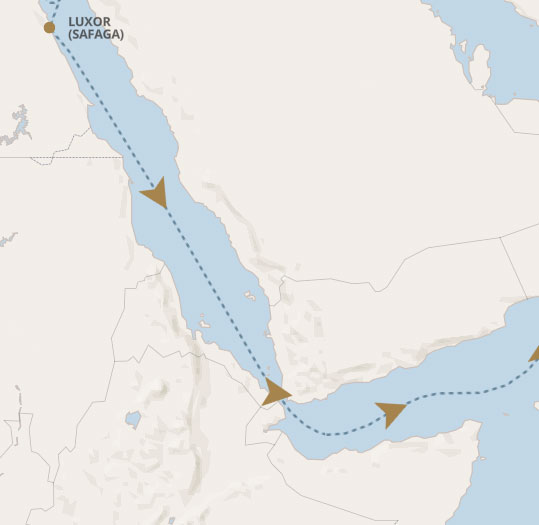
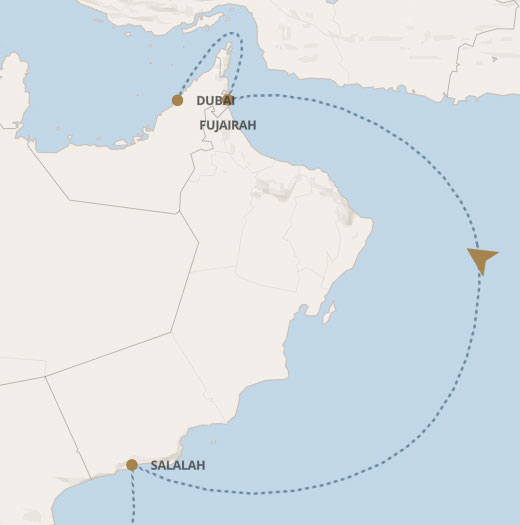
10/28/2022 (Friday) Regent provided a three-day pre-cruise tour of Istanbul as part of the trip package, so we're traveling several days before the official start of the cruise.
We took Annie and Lizzie in for boarding this morning - and as usual they ran in, excited. I think they enjoy being with other dogs for a while.
Here's our usual departure picture.
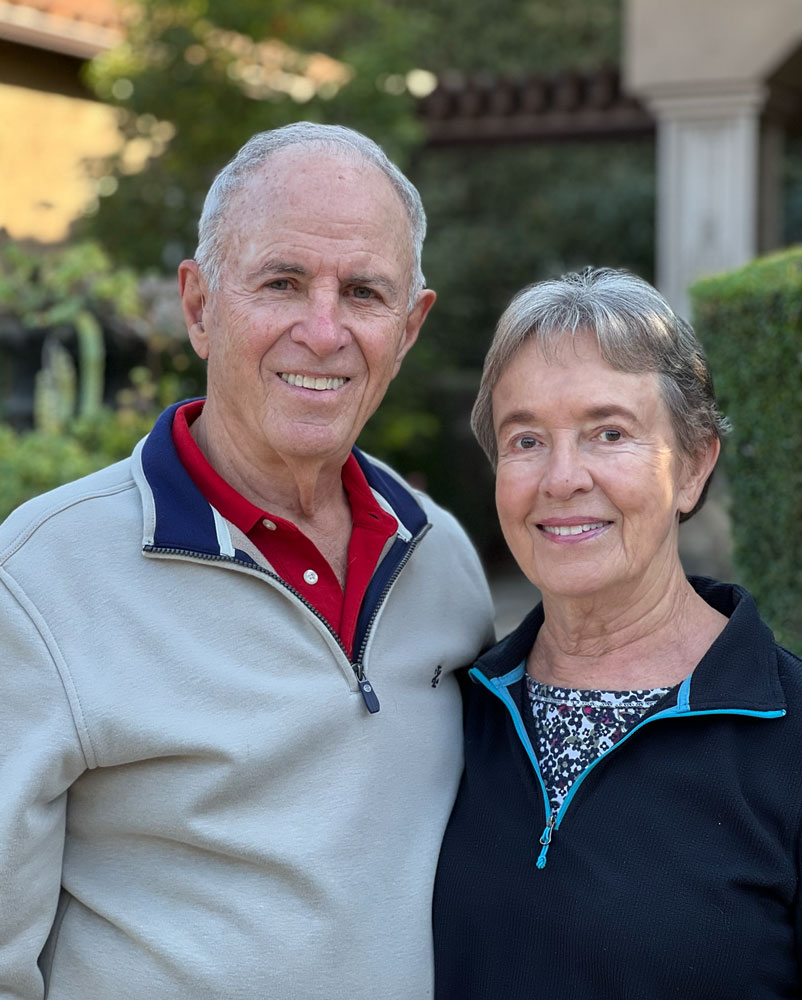
The Carey limo driver, Michael, was scheduled for 9:30am, but showed up early so we were able to leave a few minutes earlier than scheduled.
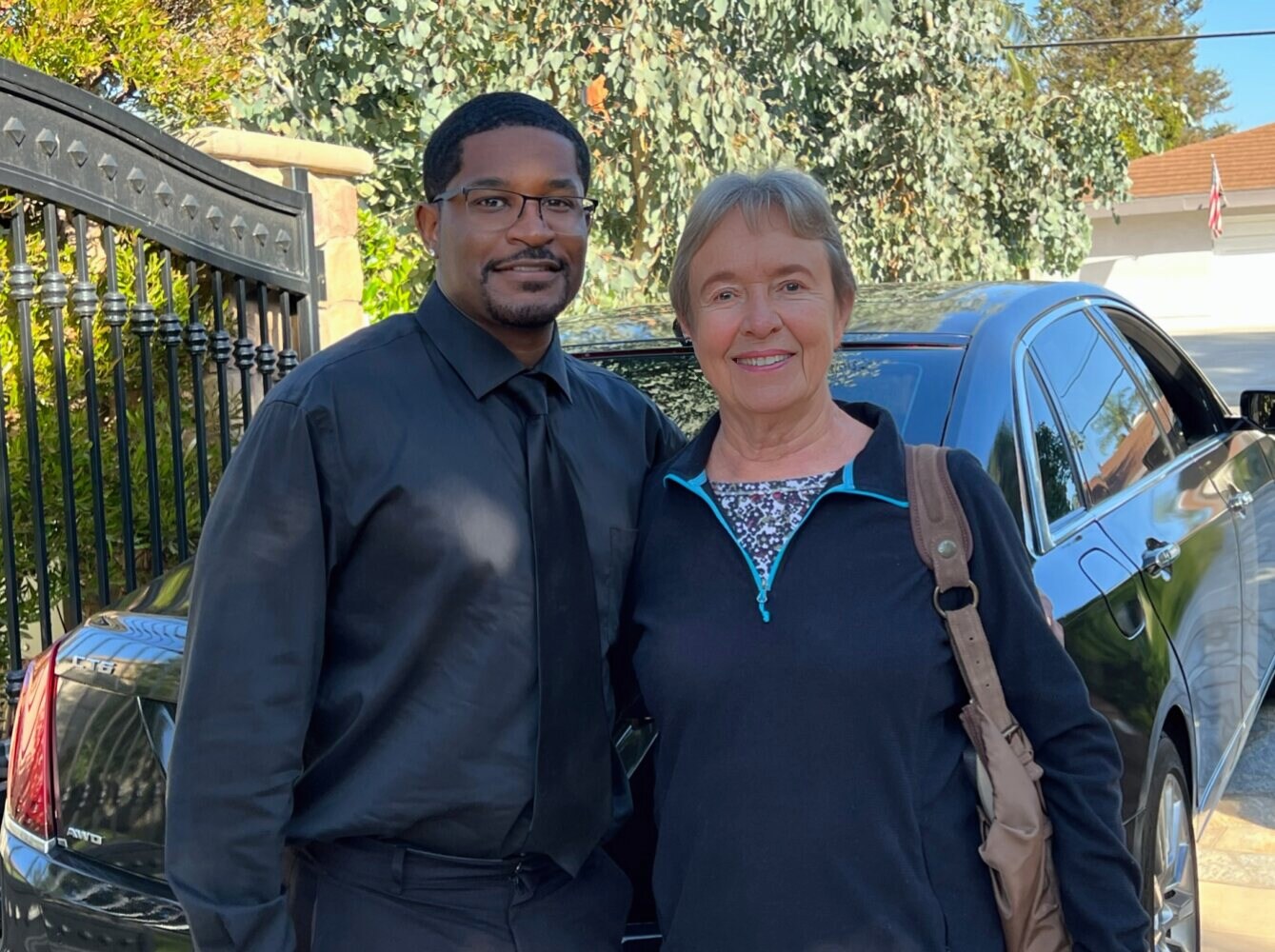
The trip to the airport was fairly quick, not much traffic until we got to the airport. Once there, getting to the Bradley terminal took quite a while.
Check-in with Turkish Airlines was quick and easy. We waved "Goodbye" to our bags, hoping to see them again in Istanbul:-) After the lost bags on our last two trips, that's not an unreasonable fear.
Then it was through security, and to the Star Alliance Lounge to wait for boarding at noon.
The plane was at the gate - a Boeing 787-9.
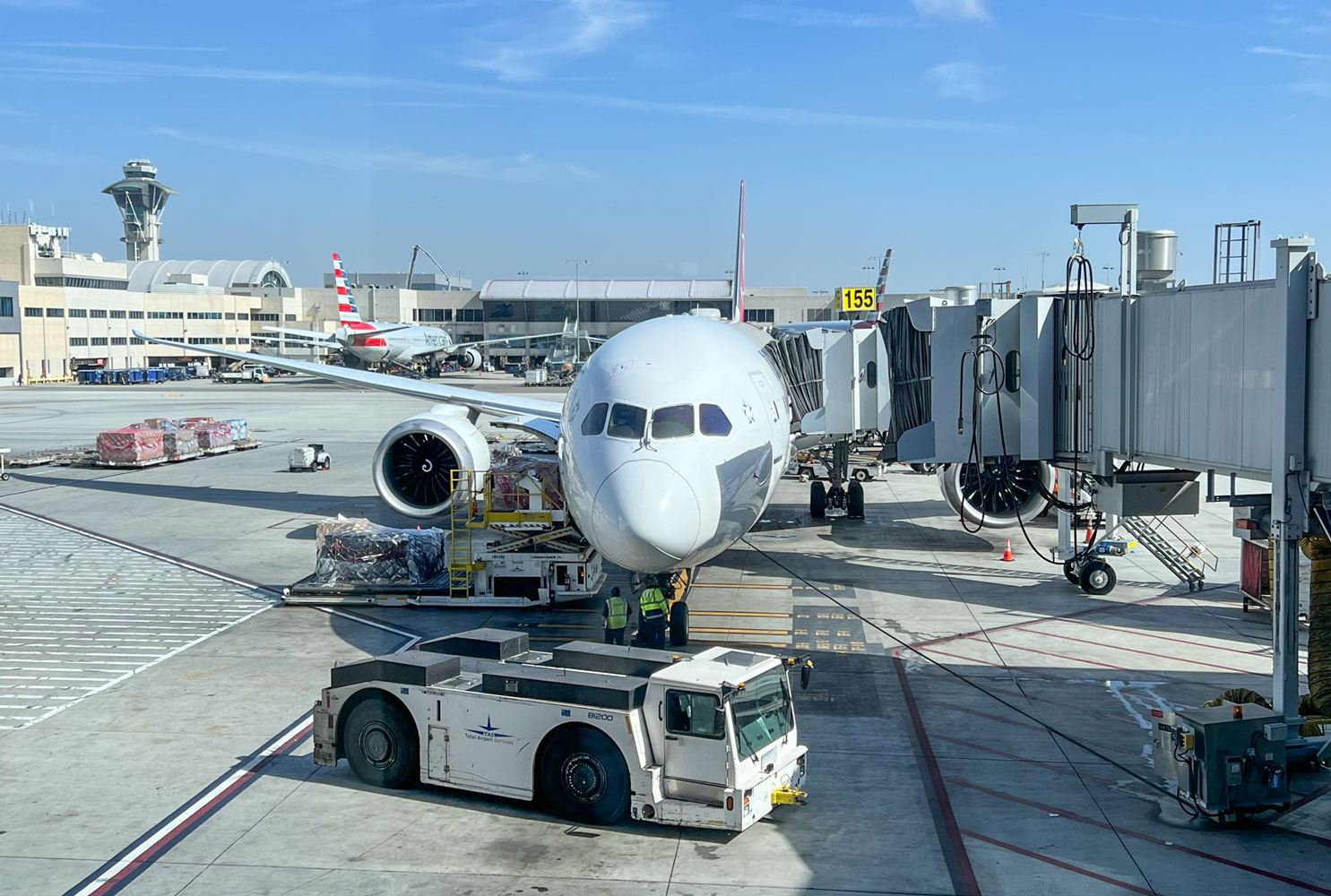
One of the pilots came out before the flight.
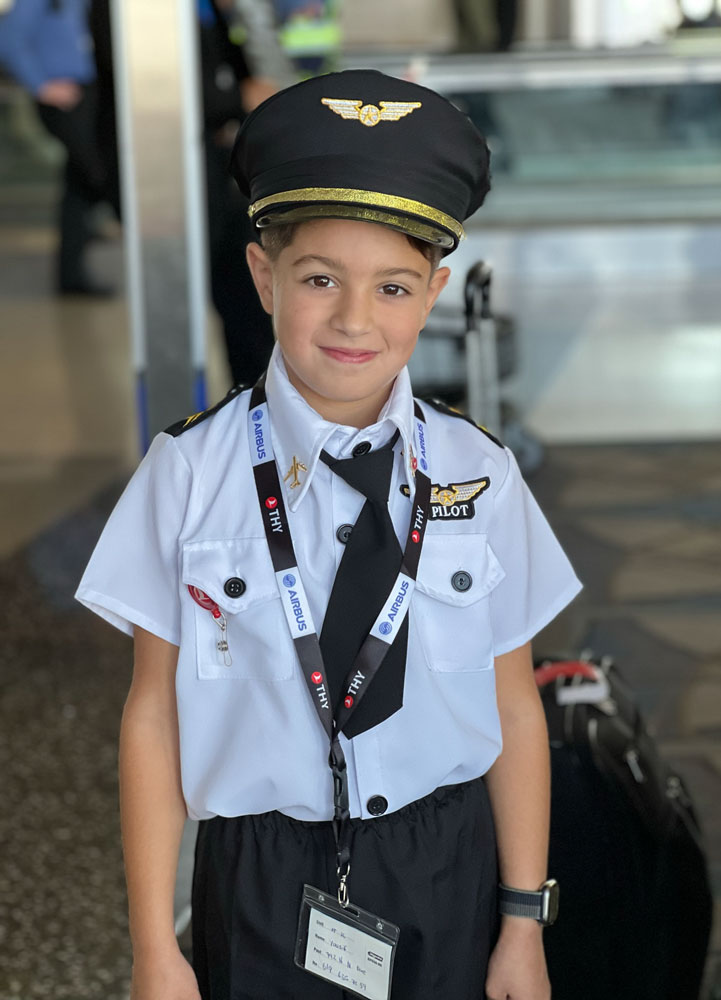
Actually, this was a young boy who was dressed "to a T" as a pilot, including a badge around his neck. He looked really authentic, except for being so short and young:-)
Eventually, we boarded. I had heard good reports about Business Class on Turkish Airways, and it was nice. But not a whole lot better than we've experienced on other airlines. One really nice feature was that they had free Internet access for Business Class passengers. They limited you to 1GB, and the speed was slow, but I could Apple text and access a few web pages.
+++++++++++++++++++++++++++++++++++++++++++++
10/29/2022 (Saturday) It was a long flight, a bit over 12 hours, but that's a lot better than two connecting flights. Neither Judy nor I were able to get any sleep. We arrived in Istanbul about noon, at the new airport, which, incidentally, is a very nice, modern airport.
We cleared customs and then went to get our bags. The Regent baggage person already had our bags on a luggage cart. We had put the Regent luggage tags on our bags and that must have been how he identified our bags. But however he did it, I was impressed.
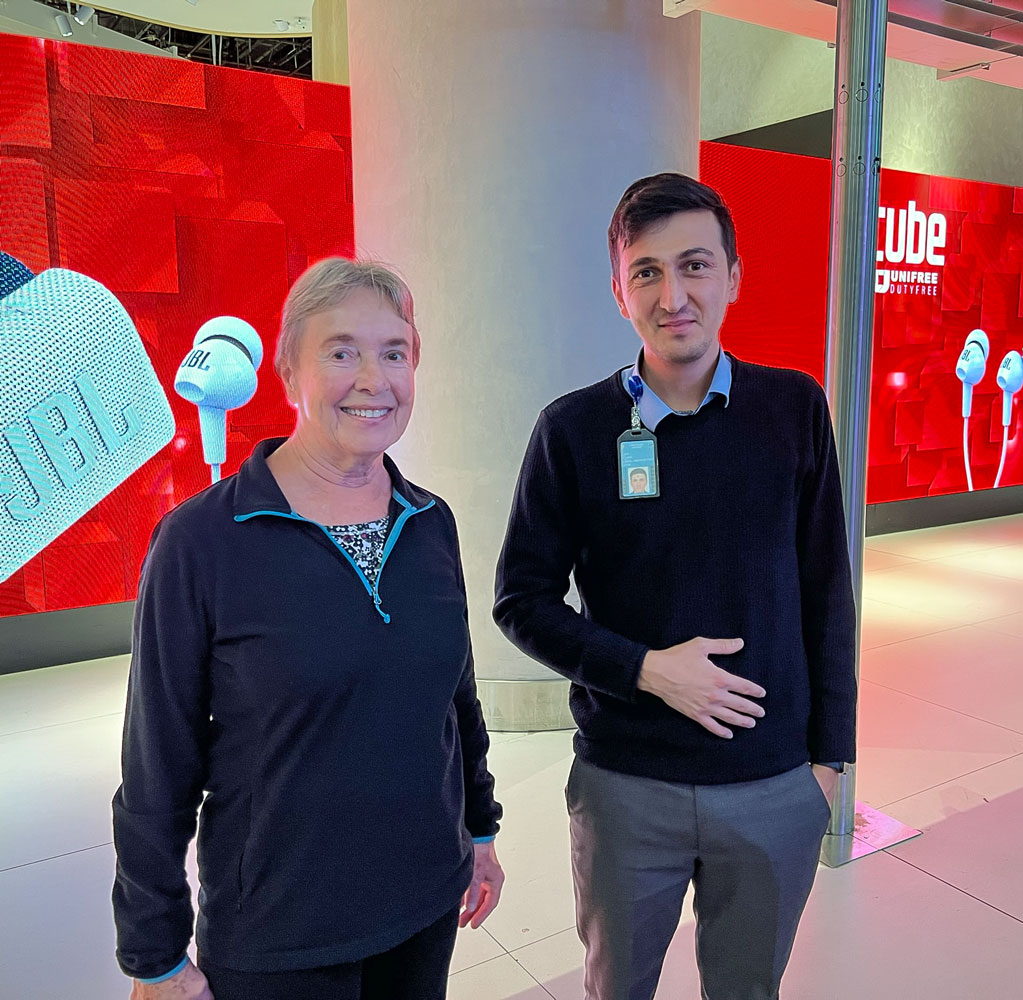
There was one other couple, Janet and Bill, from Camarillo, on the flight with us, and we rode together to the hotel, arriving about 2:30pm. The hotel, the Istanbul Intercontinental, is very nice. The public areas are very well maintained and the staff is excellent. The Internet access, which is important to me, was very good.
Here's a view of our room, overlooking the Bosphorus. We are on the European side, opposite the Asian side of the city.
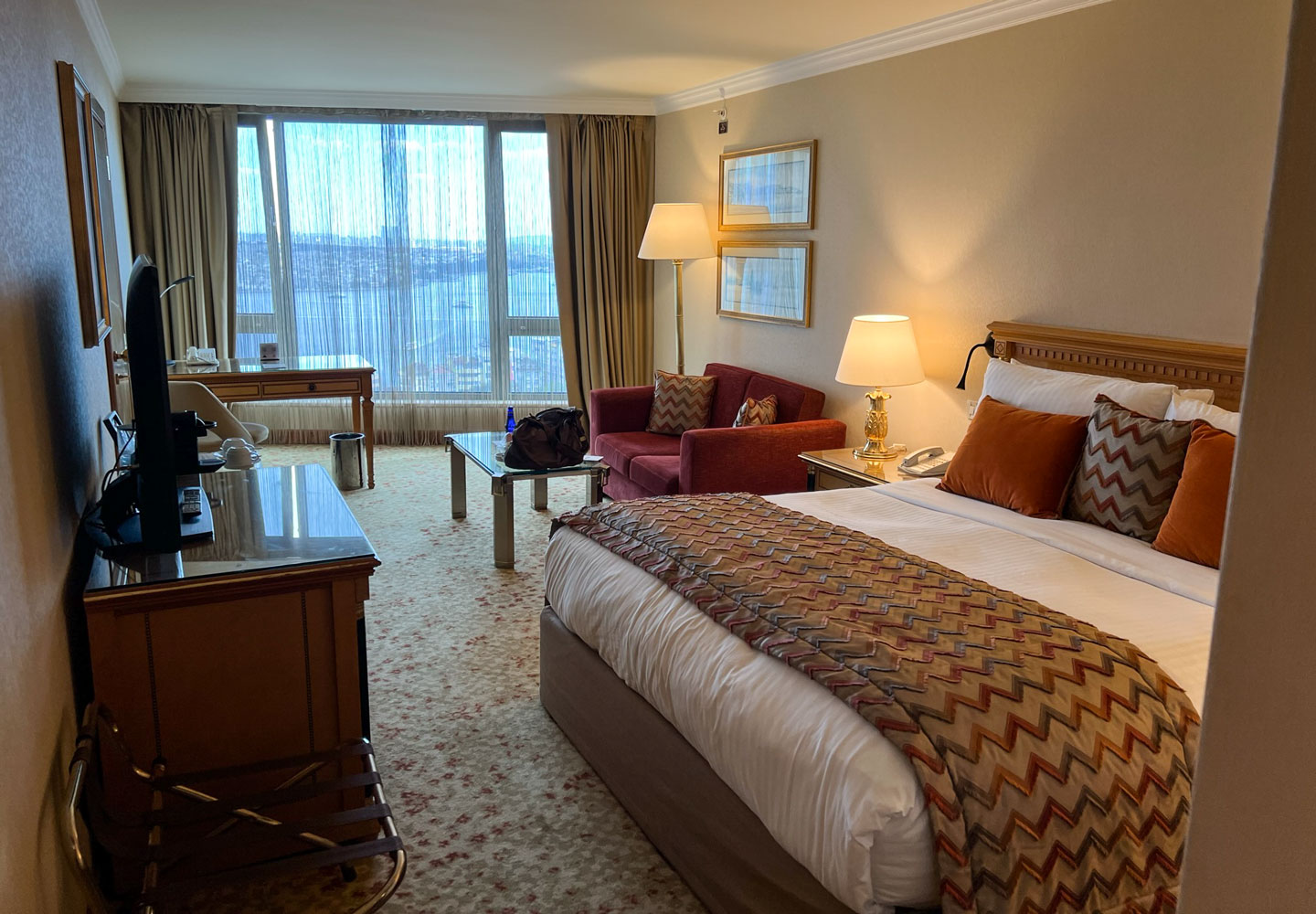
But the hotel is a bit old and the bath reflects that. The bathroom is fairly small, with a shower in the tub. I really dislike "in tub" showers because of the danger of falls, especially when getting in and out of the tub. This tub was especially dangerous because the tub bottom was rounded.
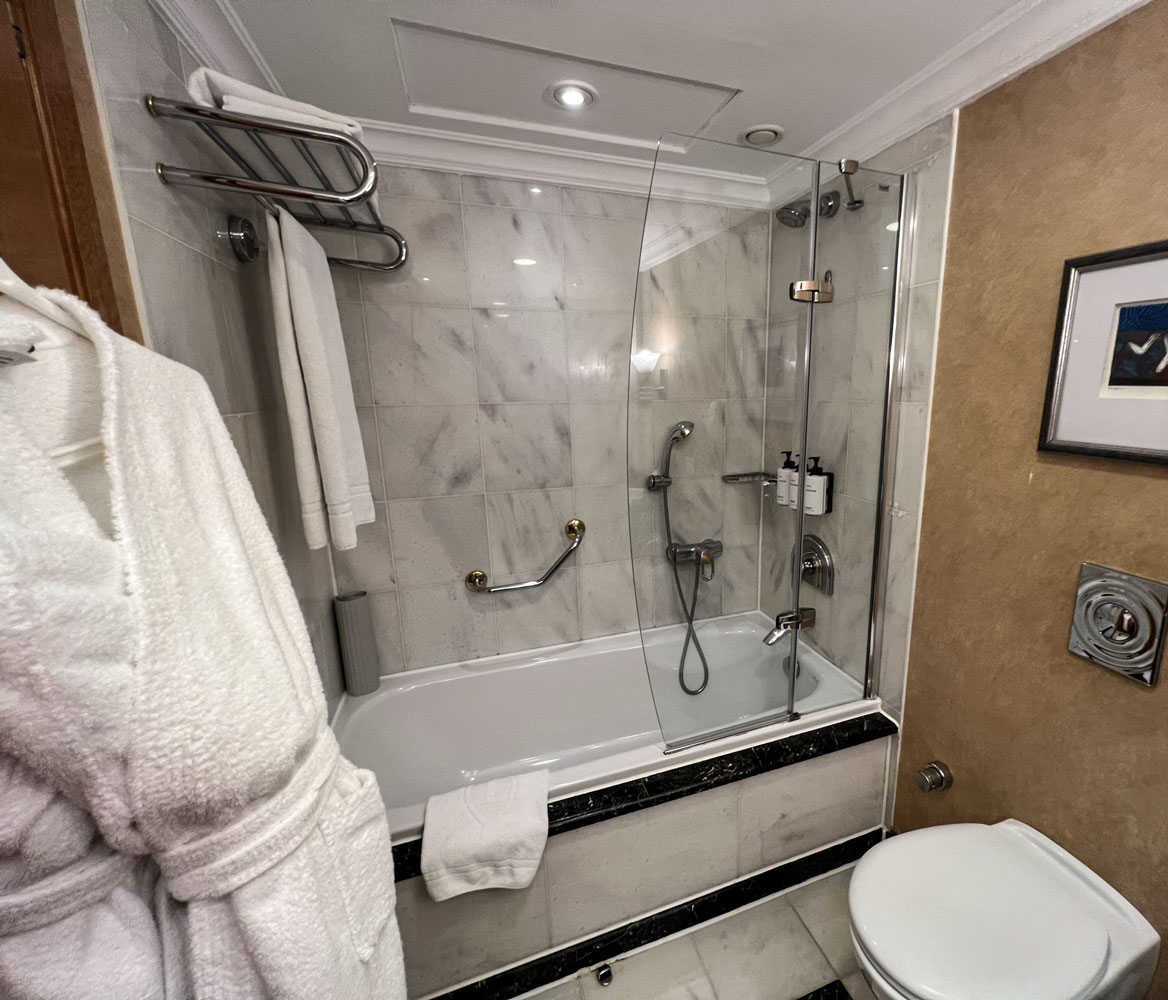
Our room was on the 18th floor (the top floor) overlooking the Bosphorus. The Bosphorus divides Europe and Asia - Istanbul is a two-continent city. We're on the European side. Note: The modern, preferred, spelling is Bosporus but I'm going to use the alternate spelling of Bosphorus in this blog.
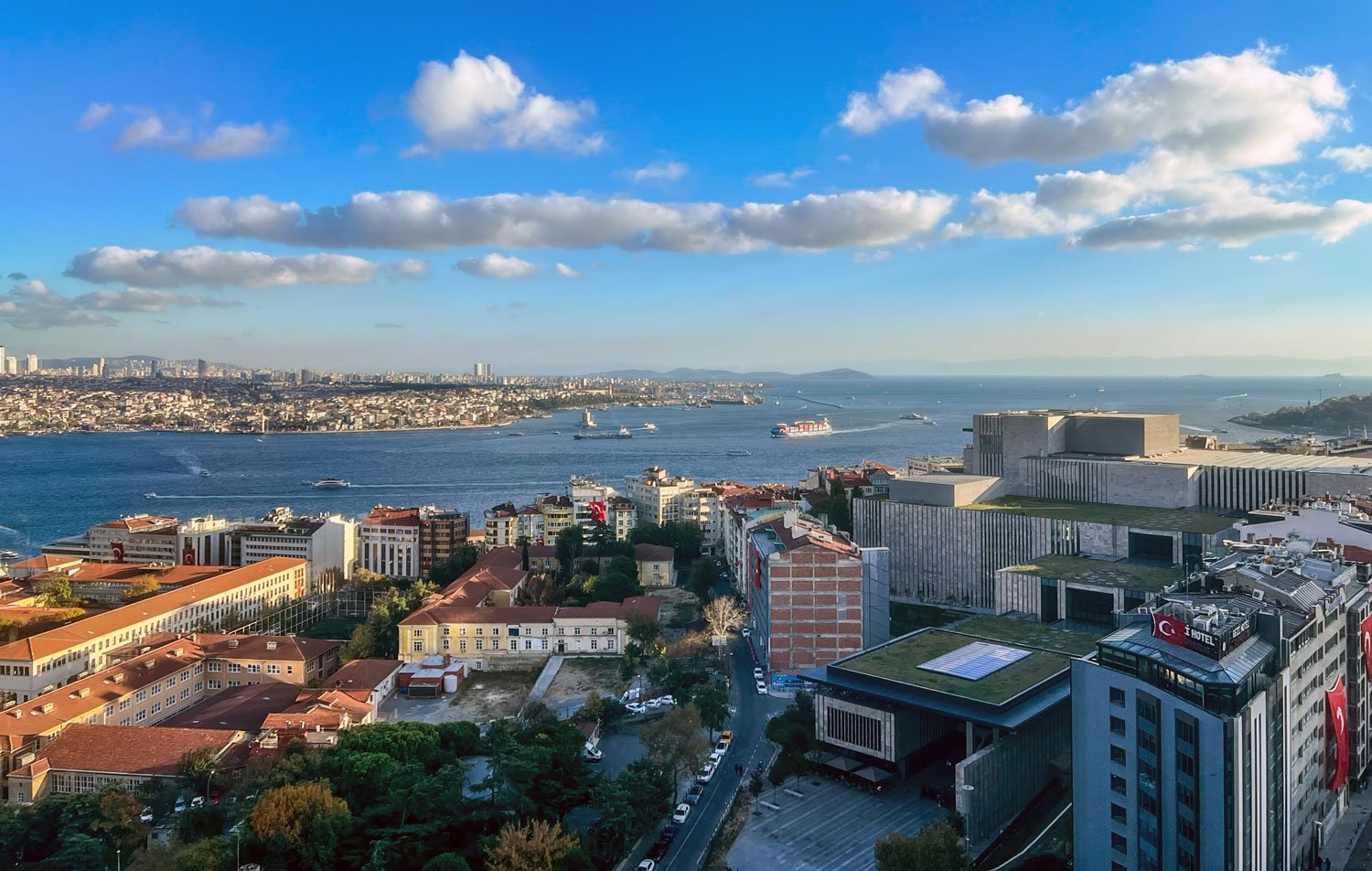
Here's a night-time view of the same scene.
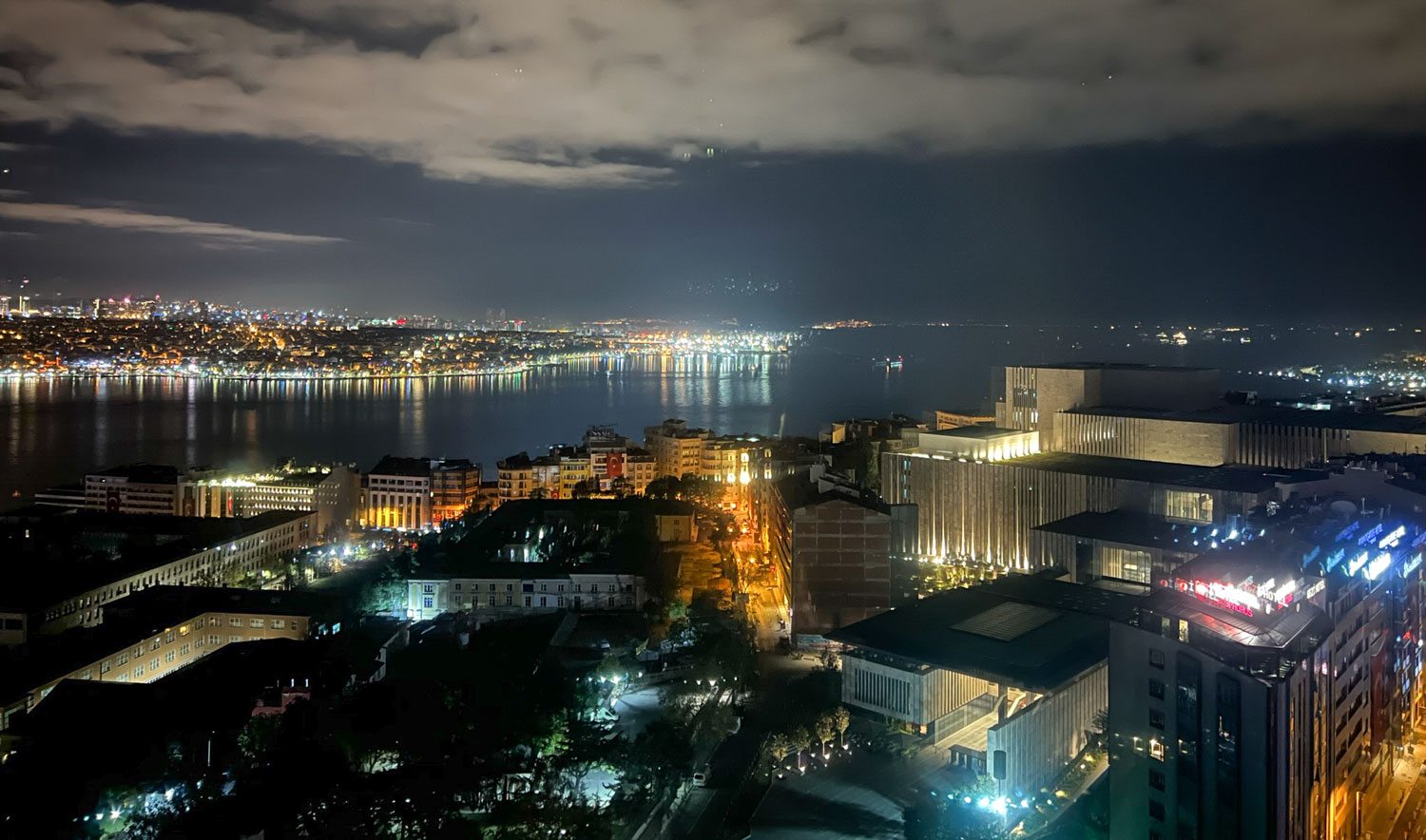
The Bosphorus likely formed within the last 11,000 years, probably within the last 8,800 years, when the level of the Mediterranean was higher. The Black sea was a fresh-water lake at that time, and at a lower level than the Mediterranean. Once water began flowing across the land neck, it carved the channel as we know it today. See here for a discussion of theories related to the formation of the Bosphorus.
One popular theory proposes that the flooding of the Black Sea basin led to the myth of Noah's Flood and Noah's Ark.
There are two parts to the channel between the Mediterranean and the Black Sea: the Bosphorus and the Dardanelles (also known as the Hellespont in antiquity). At it's narrowest point, the Dardanelles is only about a mile wide (about 1,500 meters) but was a serious obstacle in antiquity. The bridging of the Hellespont by Xerxes I in 480 BC (on his way to invade Greece) was a major technological achievement. It not only bridged the Hellespont, but bridged two worlds, the European and Asian cultures.
The invasion of Greece by Xerxes I was a major event in ancient history. It led to the heroic stand of the Spartans, led by King Leonidas I at Thermopylae (side note: There were several movies made about this battle. A recent one is "300", made in 2006. Another was "The 300 Spartans", made in 1962). Thermopylae translates to "Hot Gates" and you'll occasionally see a reference in poetry to it as "hot gates", for example in T.S. Eliot's poem Gerontion. I've always loved the way that poem opens: "Here I am, an old man in a dry month/being read to by a boy, waiting for rain./I was neither at the hot gates/nor fought in the warm rain...". Eliot didn't mean it this way but I always took the last line to mean Vietnam (but it was written shortly after WWI).
Some of the Spartans were able to retreat, but Leonidas and his 300 royal bodyguard warriors fought to the last man at Thermopylae. The Greek fleet retreated to the island of Salamis, and lured the Persian fleet into a naval battle, the Battle of Salamis, one of the most famous naval battles of all time, which saved Greece from the Persian invasion. With the loss of his fleet, Xerxes lost the ability to supply has army. (Side note: It's said that amateurs study tactics and professionals study logistics.) Xerxes returned to Persia with most of his army and left the remaining troops under the command of one of his generals, Mardonius, to continue the war. Unfortunately, most of the troops Xerxes took with him for the trip back to Persia died of starvation or disease during the retreat.
The following year, the Greeks and Persians met for battle near the city of Plataea, leading to the Battle of Plataea, where the Greeks decisively defeated the Persians. The Persian general Mardonius was killed in that battle. It was the last land battle of the war.
While we did not need a Covid test to embark the ship, there were some insurance reasons for having a negative test before boarding. I had arranged to have a PCR test at the hotel, and the testing person came to our room about 3:30 and administered the test. By 6pm we had the results, and were both negative.
After a snack in the restaurant, we fell into bed and were immediately asleep.
+++++++++++++++++++++++++++++++++++++++++++++
10/30/2022 (Sunday) Today, we have a tour of Istanbul. Istanbul has a long history. It was founded in the 7th Century BCE as Byzantium by Greek settlers. In 324 Emperor Constantine the Great made it his imperial city and renamed it, in 330, to Constantinople, by which it was known until 1930, when it was renamed to Istanbul. It is the largest city, by population, in Europe (almost 16 million people).
In antiquity, the city controlled the maritime trade between Black Sea ports and the Mediterranean, and was wealthy because of the taxes imposed on the trade.
We met in the lobby at 8am and separated for several buses. We were on bus 1.
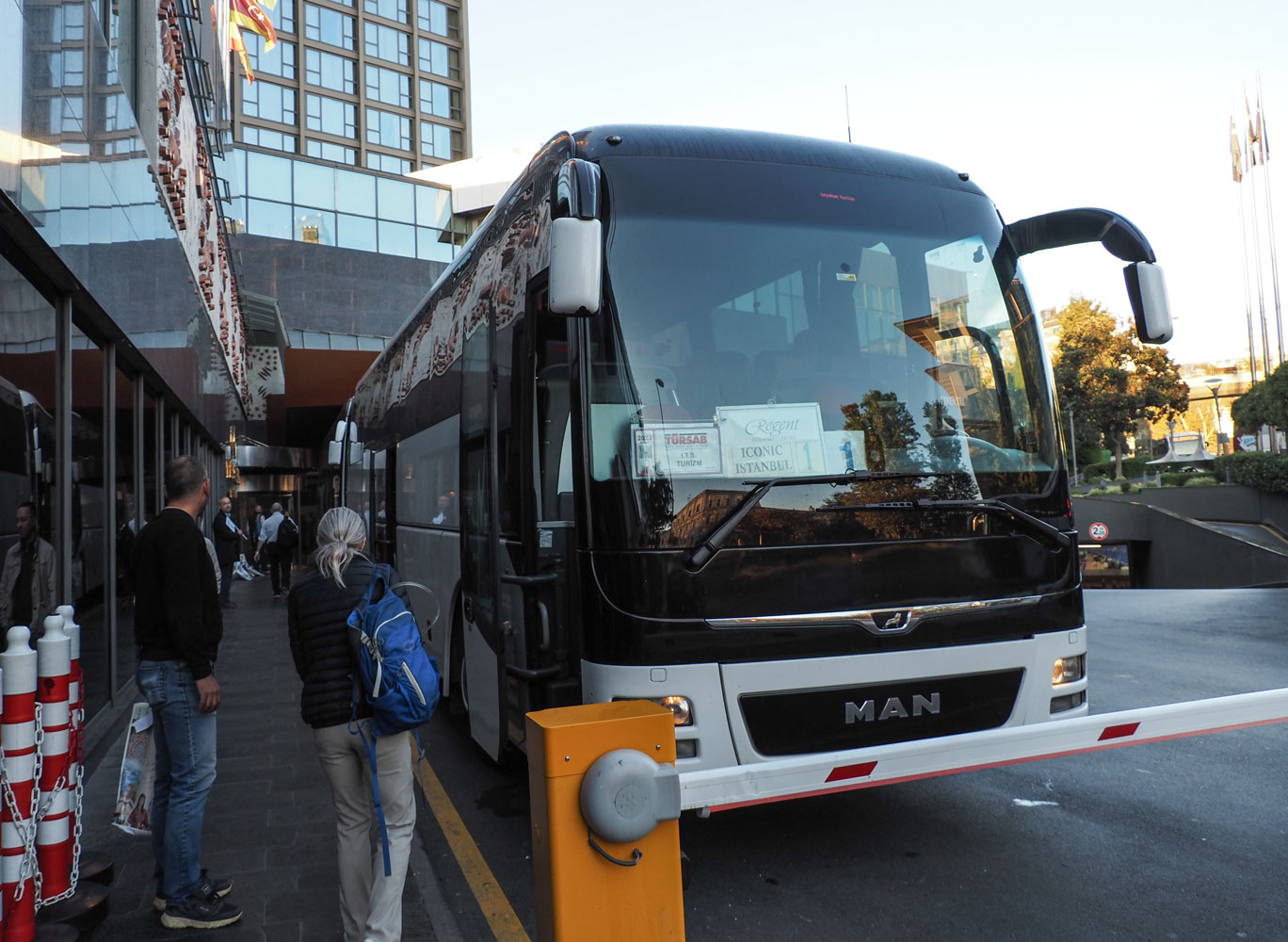
Our guide for the tour was Sedat Cakmak. He's an experienced guide and kept up a continuous stream of information about the sites we visited.
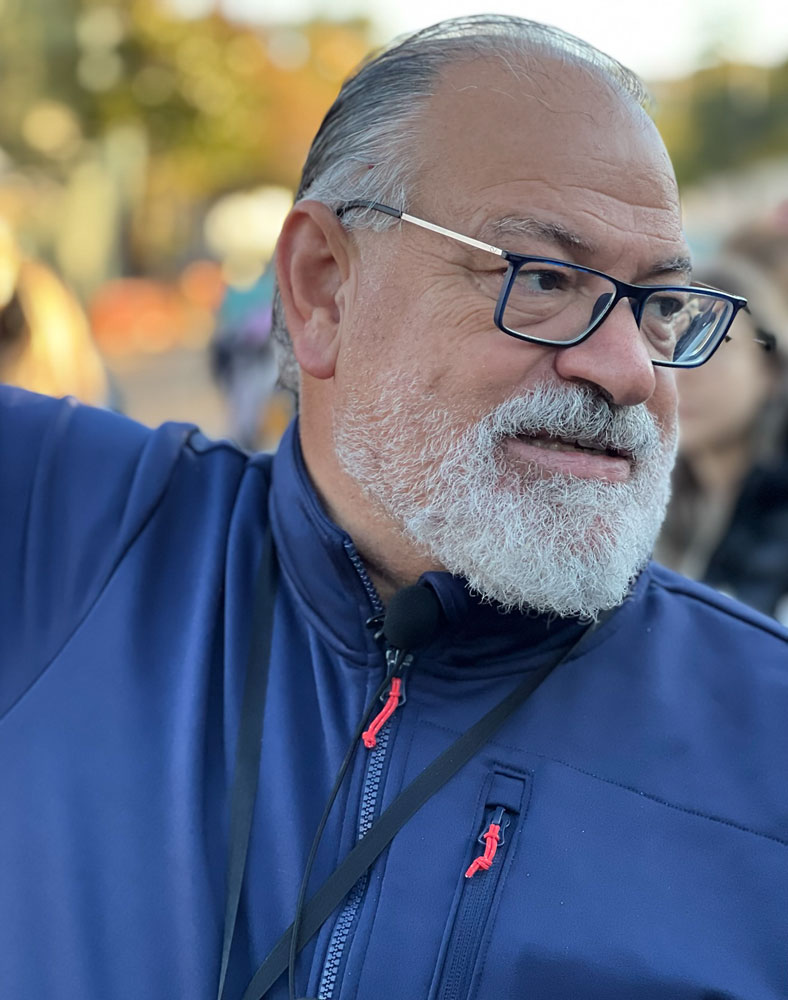
Our tour today started with a visit to the Hagia Sophia, which was built as a Christian church and then converted to a mosque. The name Hagia Sophia translates to "Great Wisdom". As I write this, I have a problem of what to call the building, since it was a church first, and then converted to a mosque in 1453. In 1935, it became a museum, but was redesignated as a mosque in 2020 by the increasingly conservative leadership of Turkey. Because of this, I'm going to call it a mosque.
The original Hagia Sophia was built by Justinian I in the 4th century. That church was destroyed by fire in the early 5th century. The church was rebuilt shortly afterwards but was destroyed during the Nika riots in 532. The church was rebuilt again and that is the mosque still standing today.
The Hagia Sophia is the most visited monument in Turkey, and it was busy during our visit. Here we are at the end of the line waiting to enter.
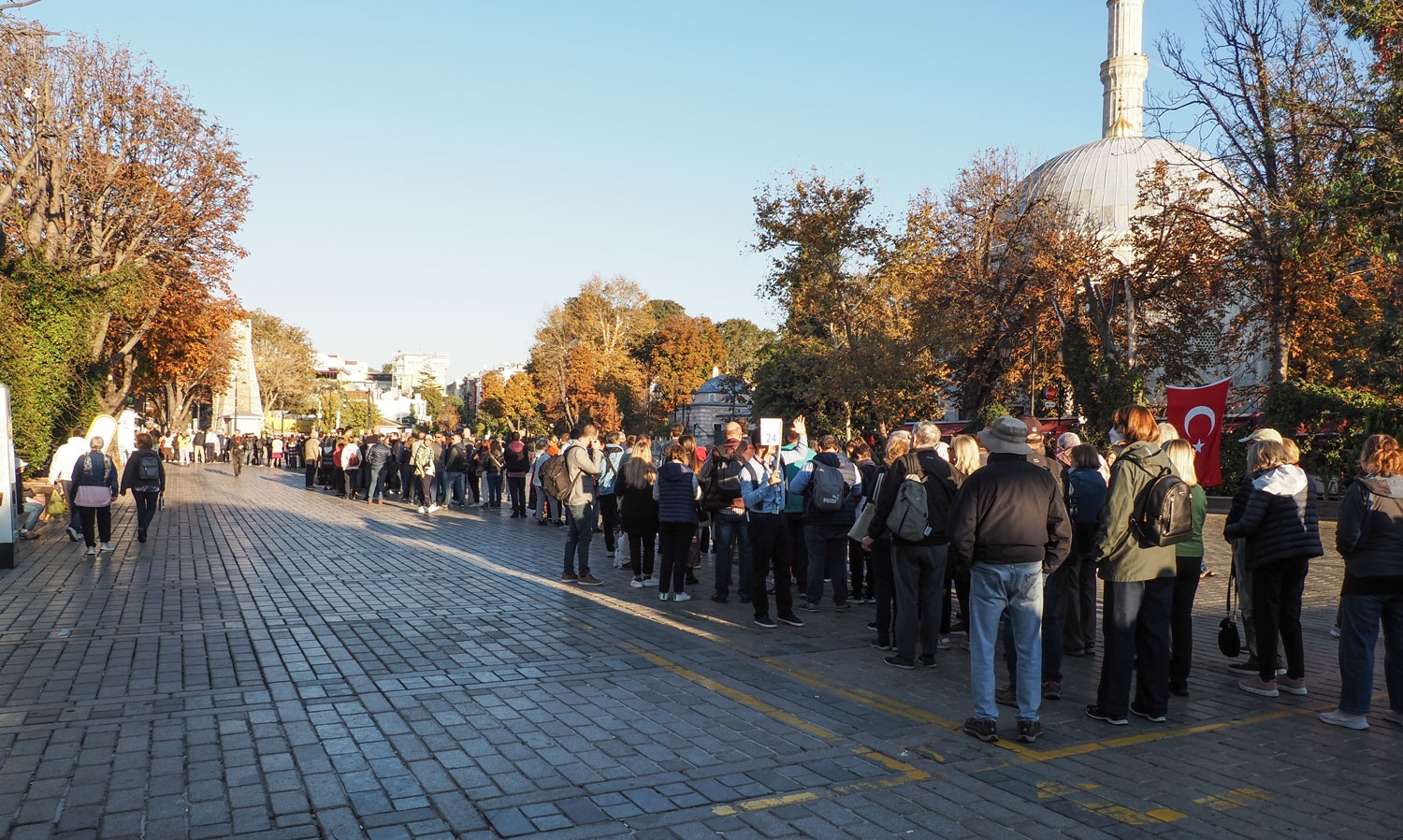
One man from our group was talking about Tauck tours and he commented, "You never wait in line on a Tauck tour. They always arrange to get you in immediately." Of course, one thing he didn't say is that if Tauck can't get a priority entry, they start the tour very early so that you're first in line. And, to be fair, a Tauck tour is a lot less people, maybe 25 to 40.
Shortly after we got in line, a lot more people showed up and the line just about doubled in length.
I wasn't very satisfied with my pictures of Hagia Sophia so I'm going to use some pictures of it from the web, in addition to a few of my own. Here's an overview of the building from the air, taken from Wikipedia. Wikipedia has an excellent article on Hagia Sophia, with many pictures. I recommend following the link to learn more about the mosque.
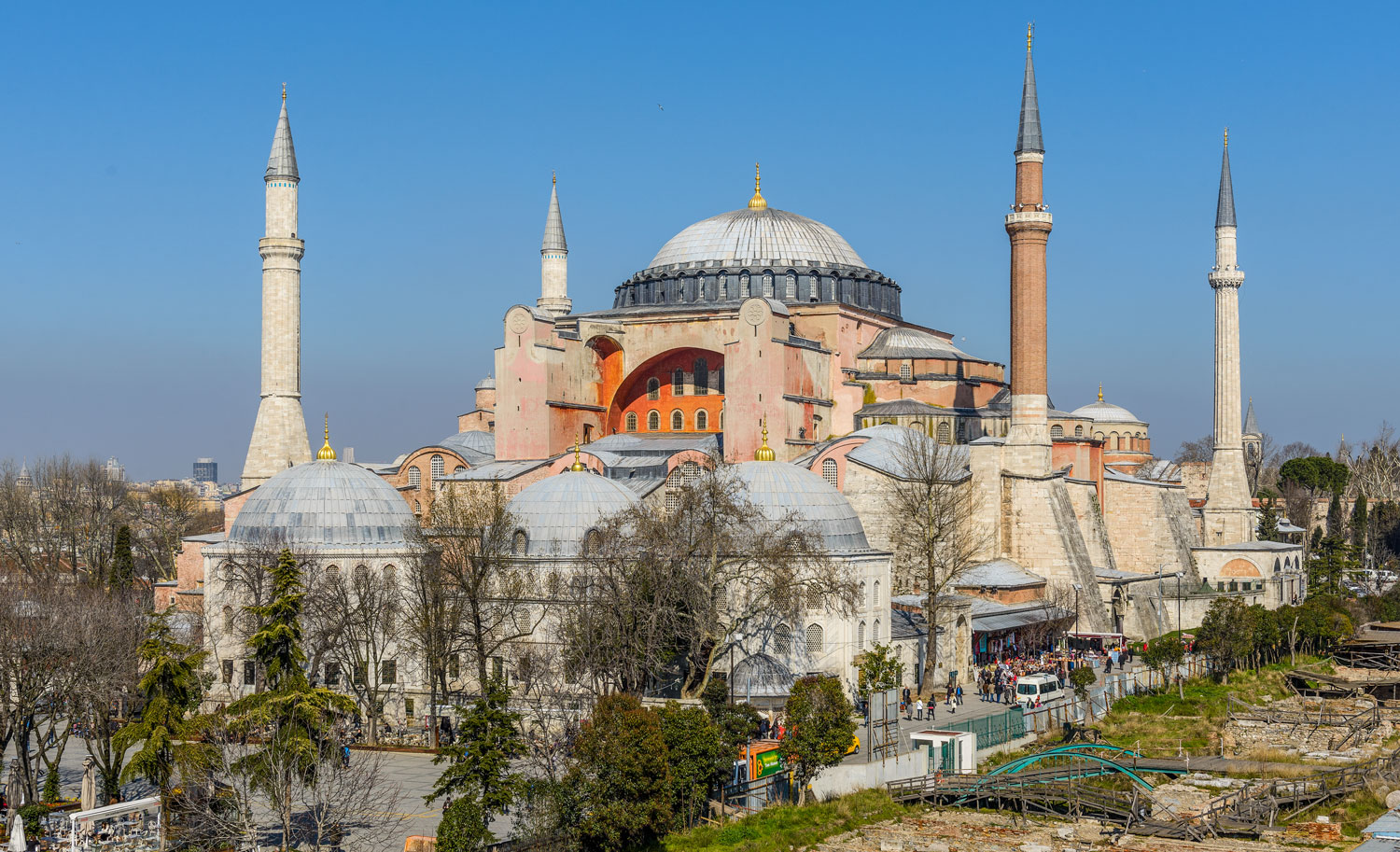
The first thing we had to do when we entered the building was to take our shoes off. But there was no place to sit down to do this, so many people had to sit on the floor to remove their shoes.
As you could tell from the line, there were many, many people in the place by the time we entered, which made it difficult to take any decent pictures. I found a website which had some very nice pictures and I've reproduced some of them here. The mosque was not very busy when these pictures were taken. There was also no carpet on the floor, as there was during our visit. The carpet was probably added when it was converted to a mosque in 2020.
Here's the overall view of the mosque. You can see the mihrab where the Christian alter would have been. This picture was taken from the balcony area, but we did not go there during our visit.
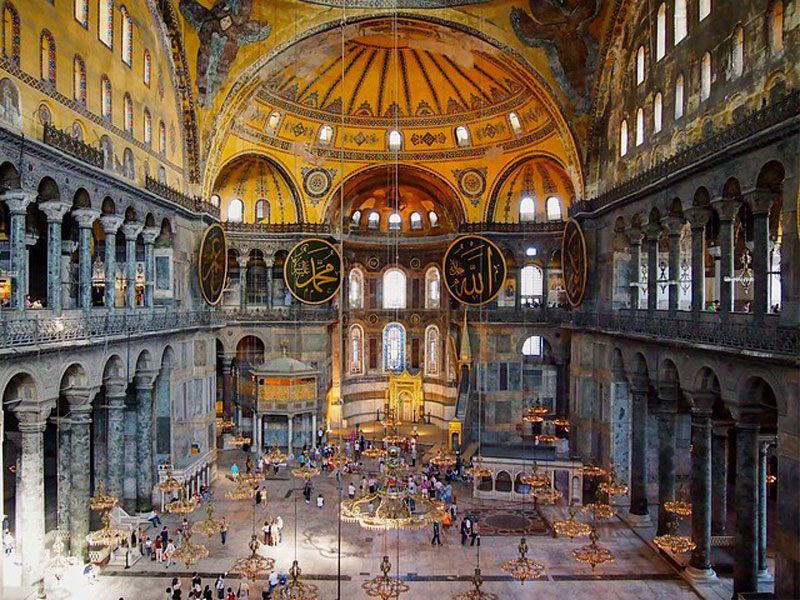
Here's a closer view of the mihrab. This area was roped off so the person standing in front of it must have been a member of the staff. (The larger pictures are mine, while the smaller pictures were taken from the web. Also, if you see green carpet, the picture is one of mine.)
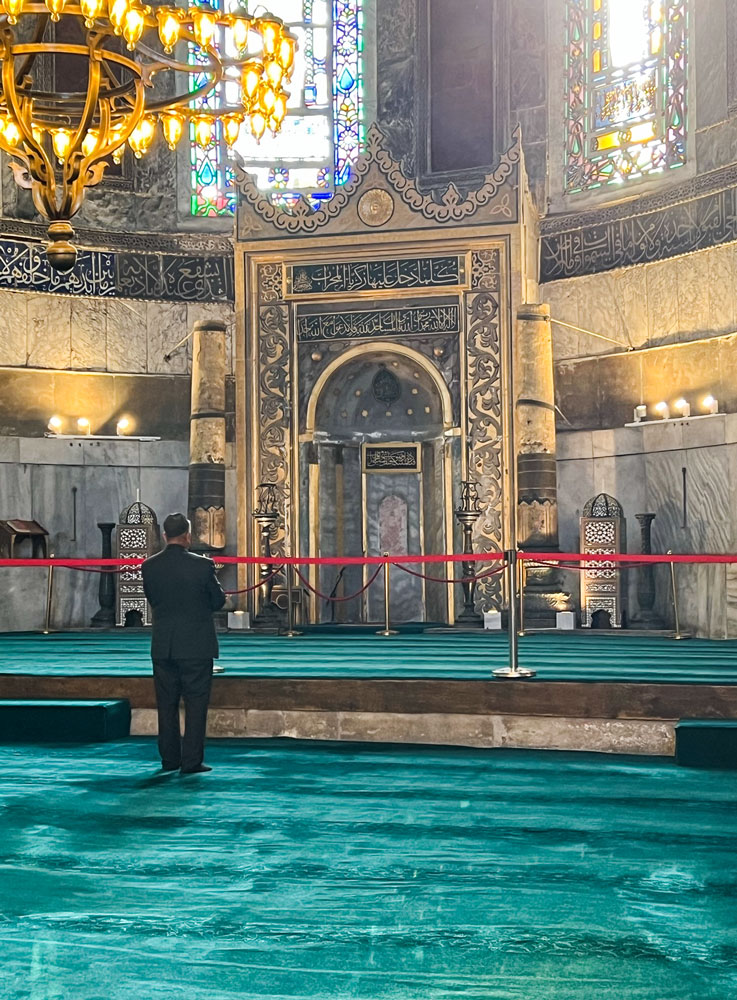
Another view of the mosque from a floor viewpoint.
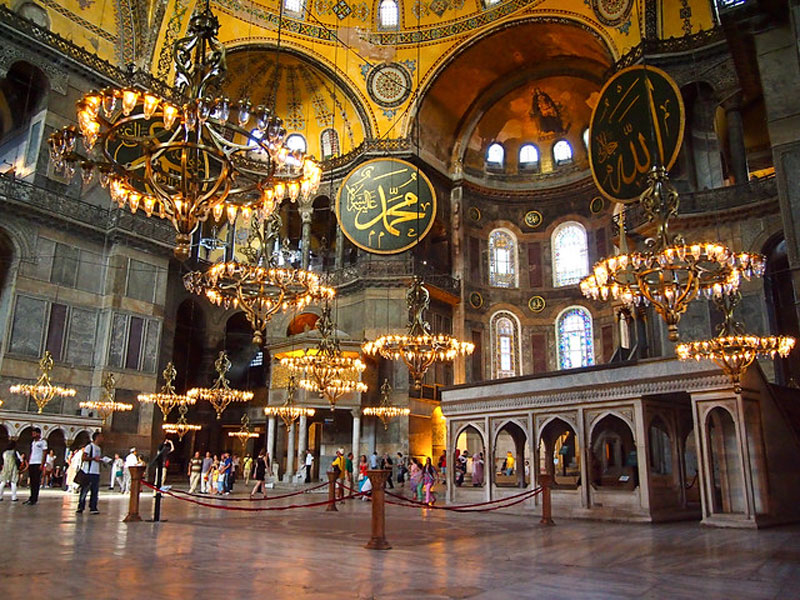
The pictures I found on the web tend to make the mosque look better than it does in person. Here's a picture I took during our visit, which is a bit more true to the colors and atmosphere of the mosque. You can also see some of the crowd in the picture.
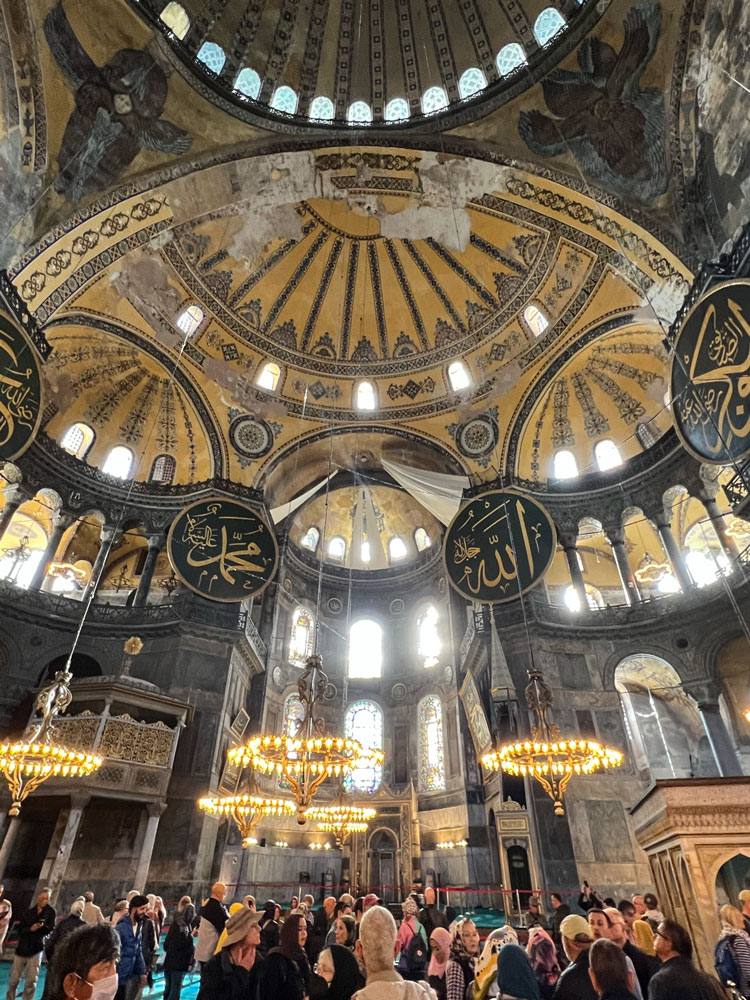
The mosque is not in good repair. We saw mosques in much better condition in Egypt and Morocco.
Islam does not permit the representation of people or animals, called aniconism, so the Christian mosaics on the church walls were covered over. During the time Hagia Sophia was a museum, a few of those mosaics were restored. I only saw two Christian mosaics, but there could have been more.
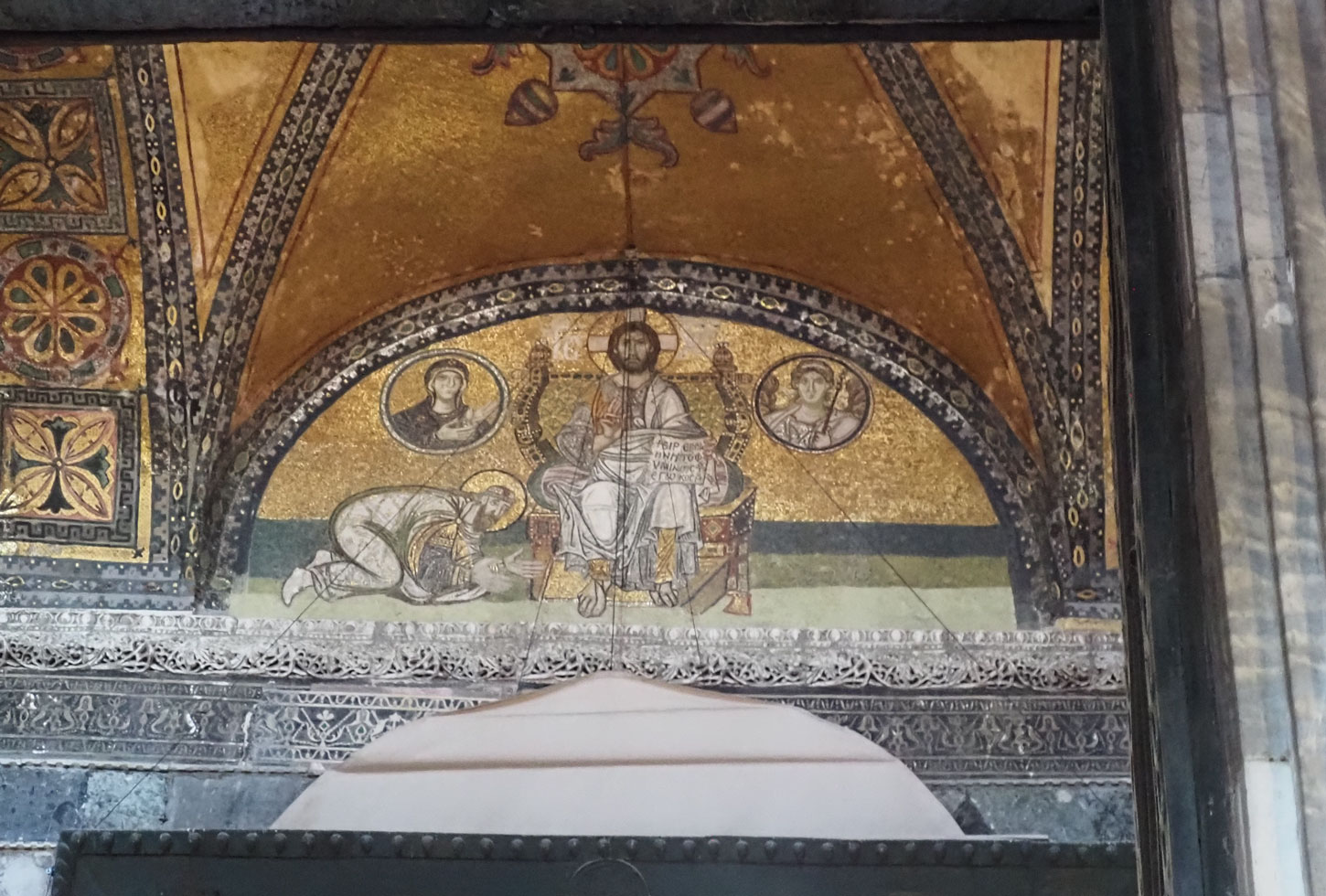
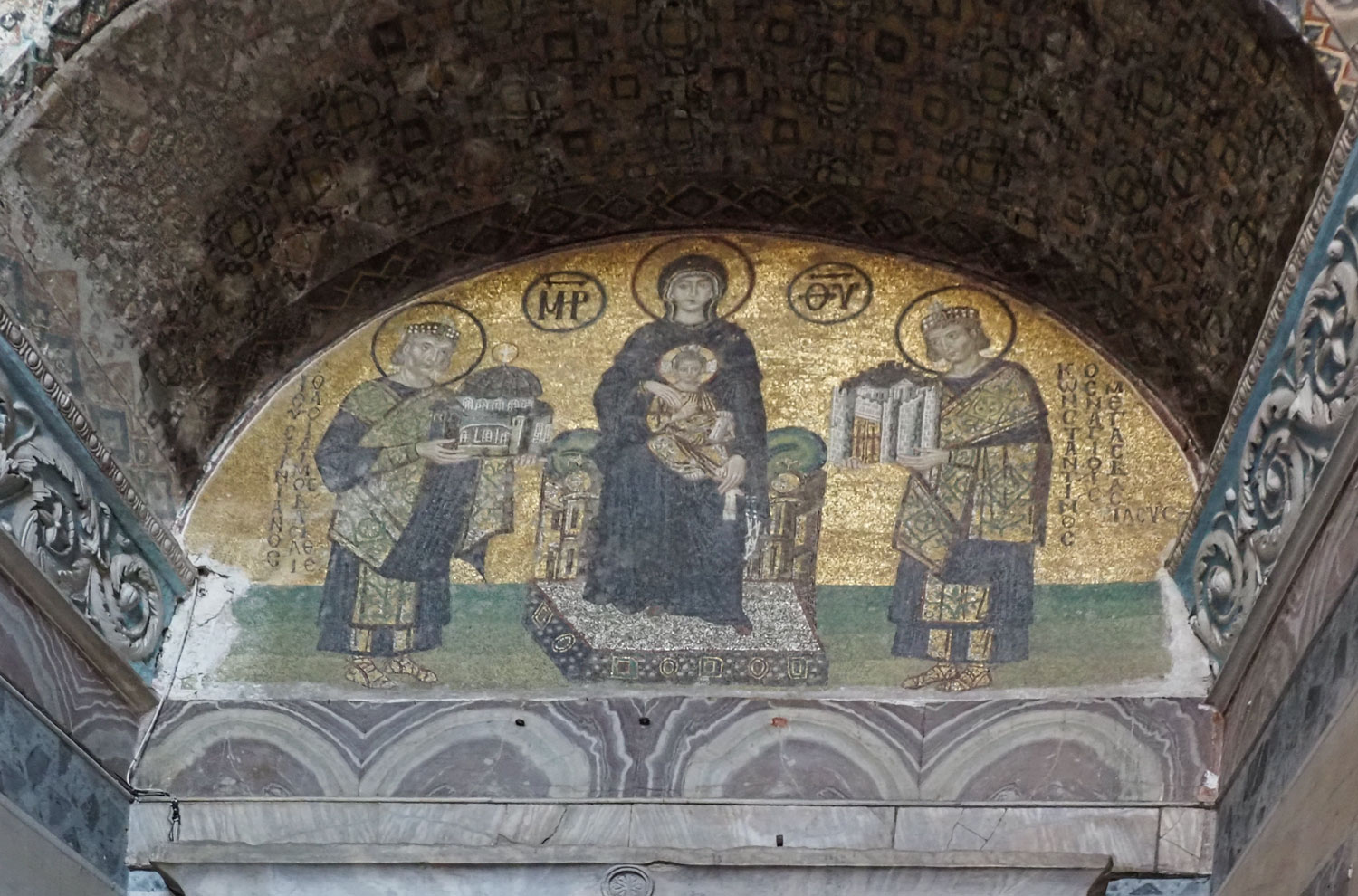
Here's a view of the Omphalos set into the floor of the mosque. Omphalion means "navel of the earth", or axis mundi. It was a feature of the Christian church - it was not added after it was converted to a mosque.
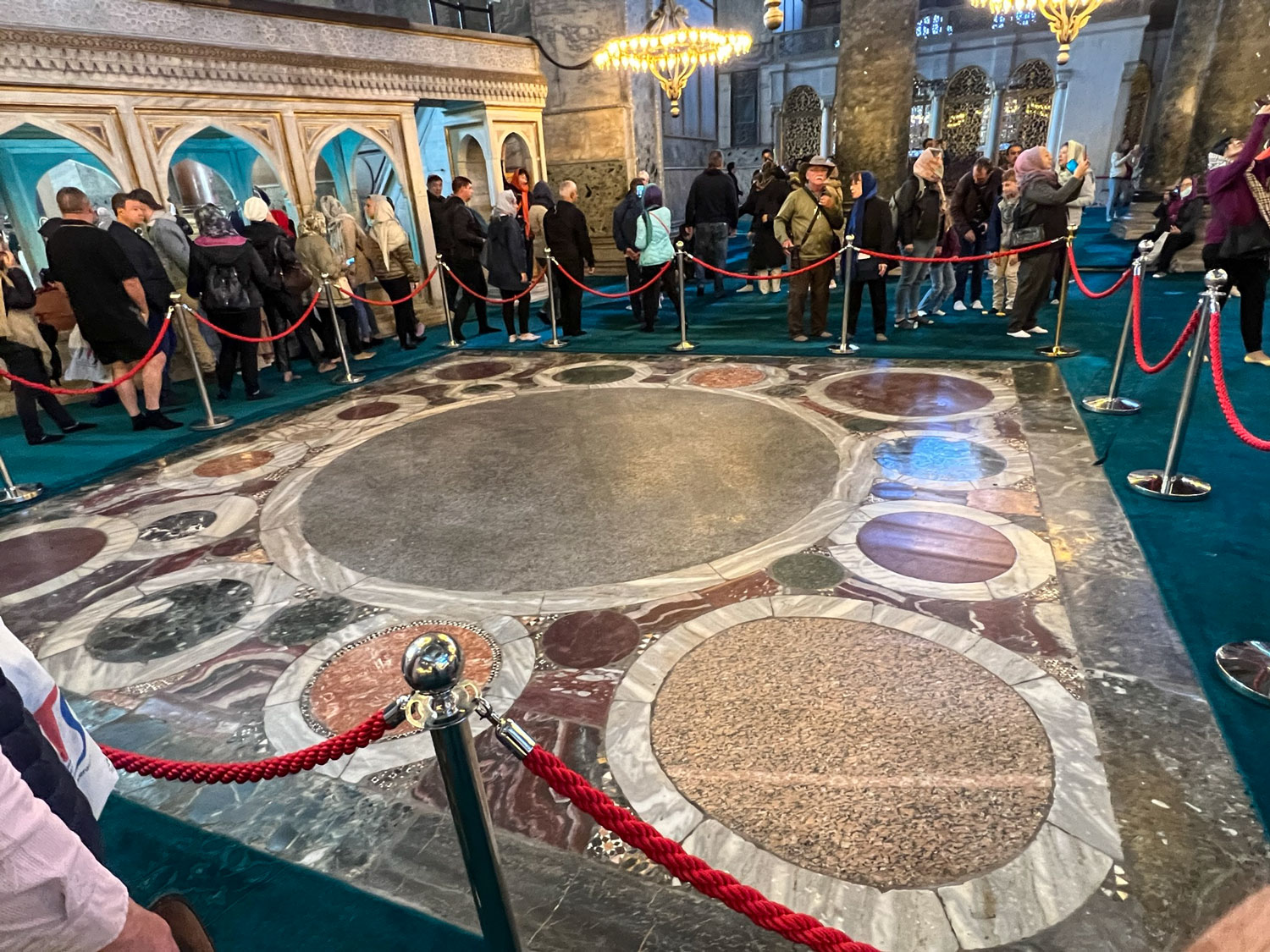
There's much more to the Hagia Sophia, but I have to stop somewhere. If you want more information, I suggest you begin with the Wikipedia article.
After we left Hagia Sophia, we went to the Topkapi Palace, which is where the sultans lived. It was completed 1460, about six years after the Muslim conquest of Constantinople (picture from Wikipedia).
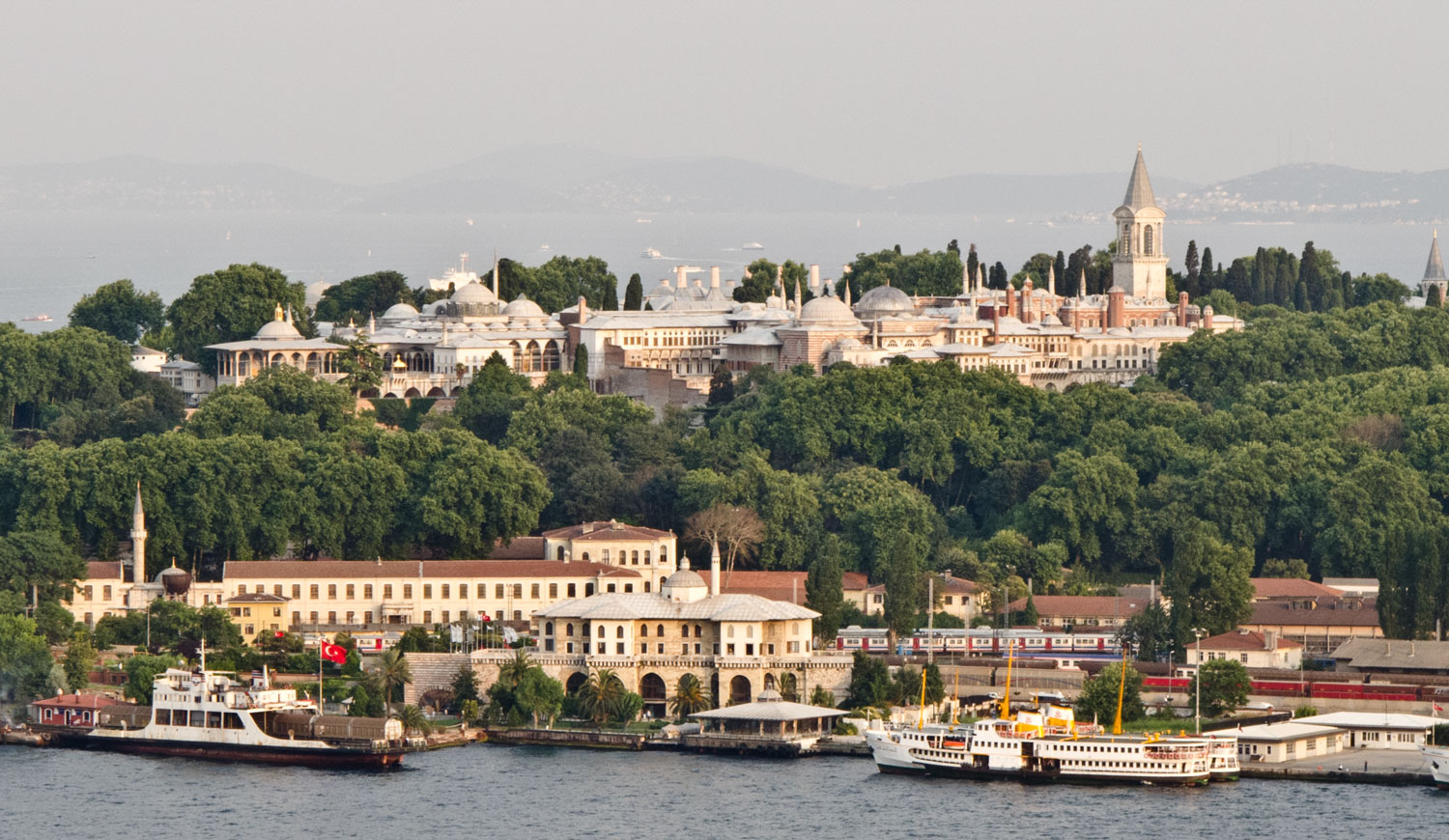
Here's our group heading to the Imperial Entrance.
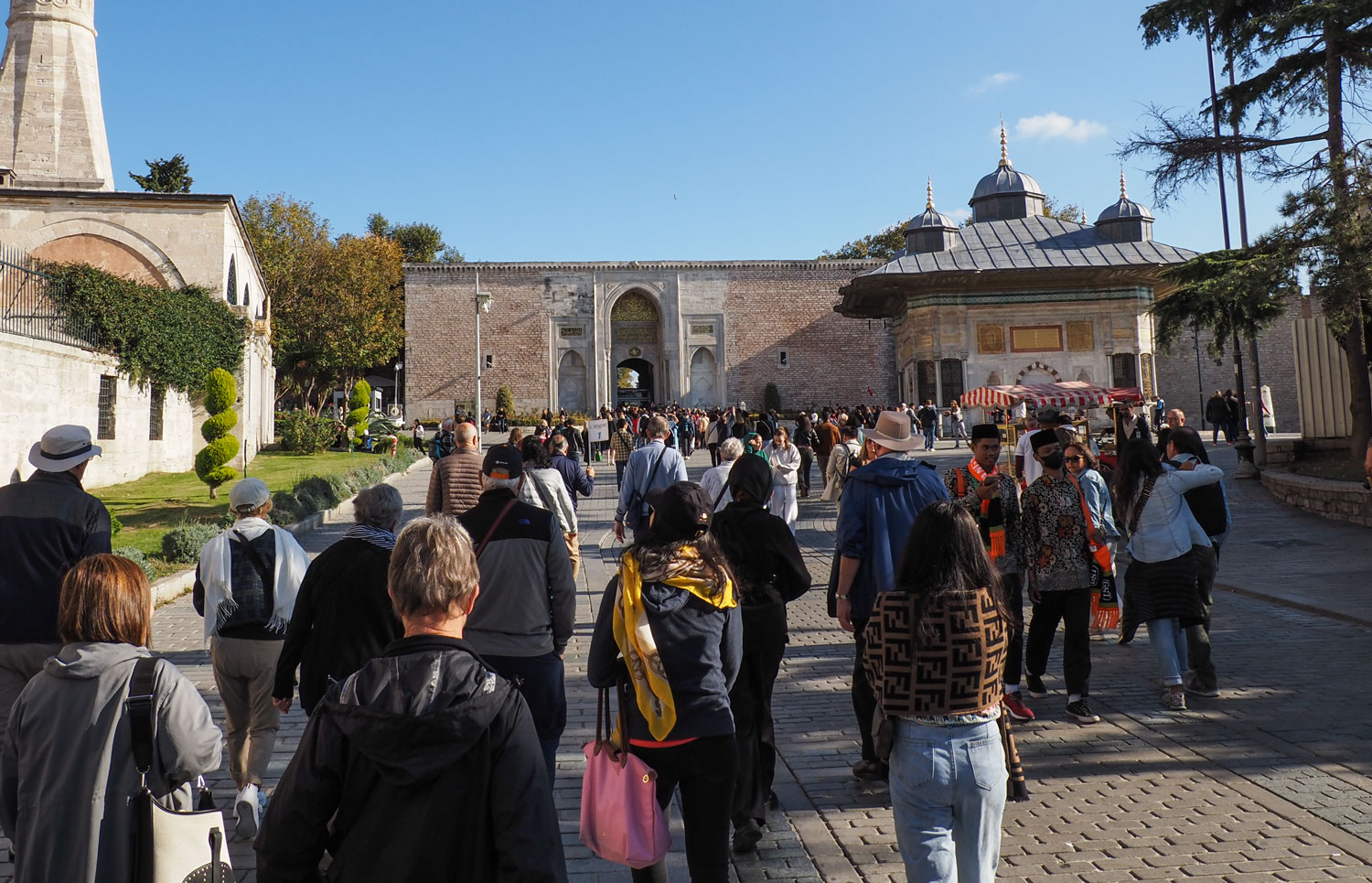
The palace is huge. There are four courtyards and we walked from one to the other, with Sedat giving commentary. But it was impossible to remember many of the details. For more information about the palace, Wikipedia is your friend.
After we passed through the entrance, we were in the first courtyard. The Hagia Irene (Holy Peace) is located there. It was built before Hagia Sophia was completed and therefore is the oldest church in Istanbul. It was never converted into a mosque.
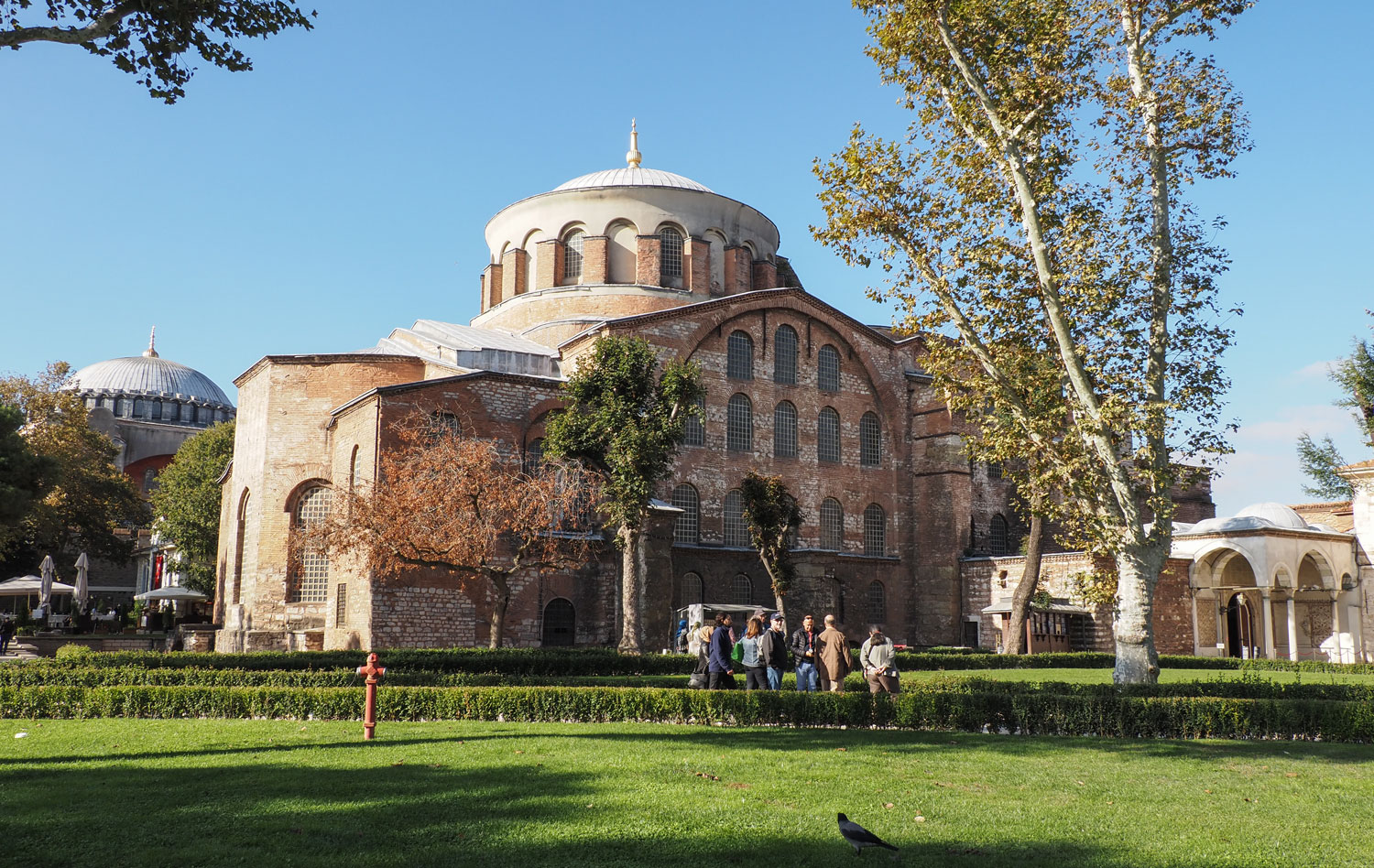
After walking through the first courtyard, we came to the Gate of Salutation, which leads to the second courtyard.
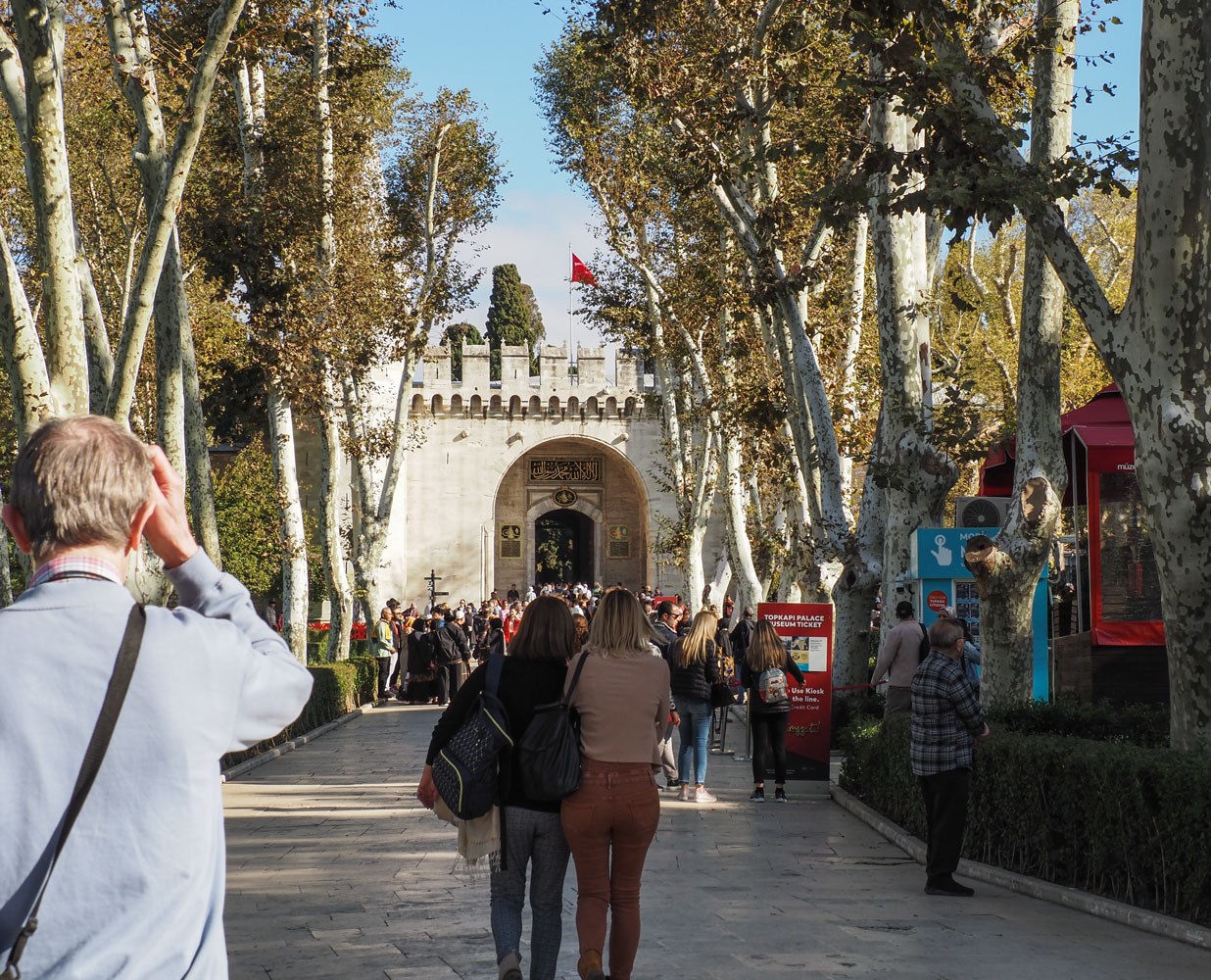
Sedat gave us a briefing before we went into the Imperial Council Chamber.
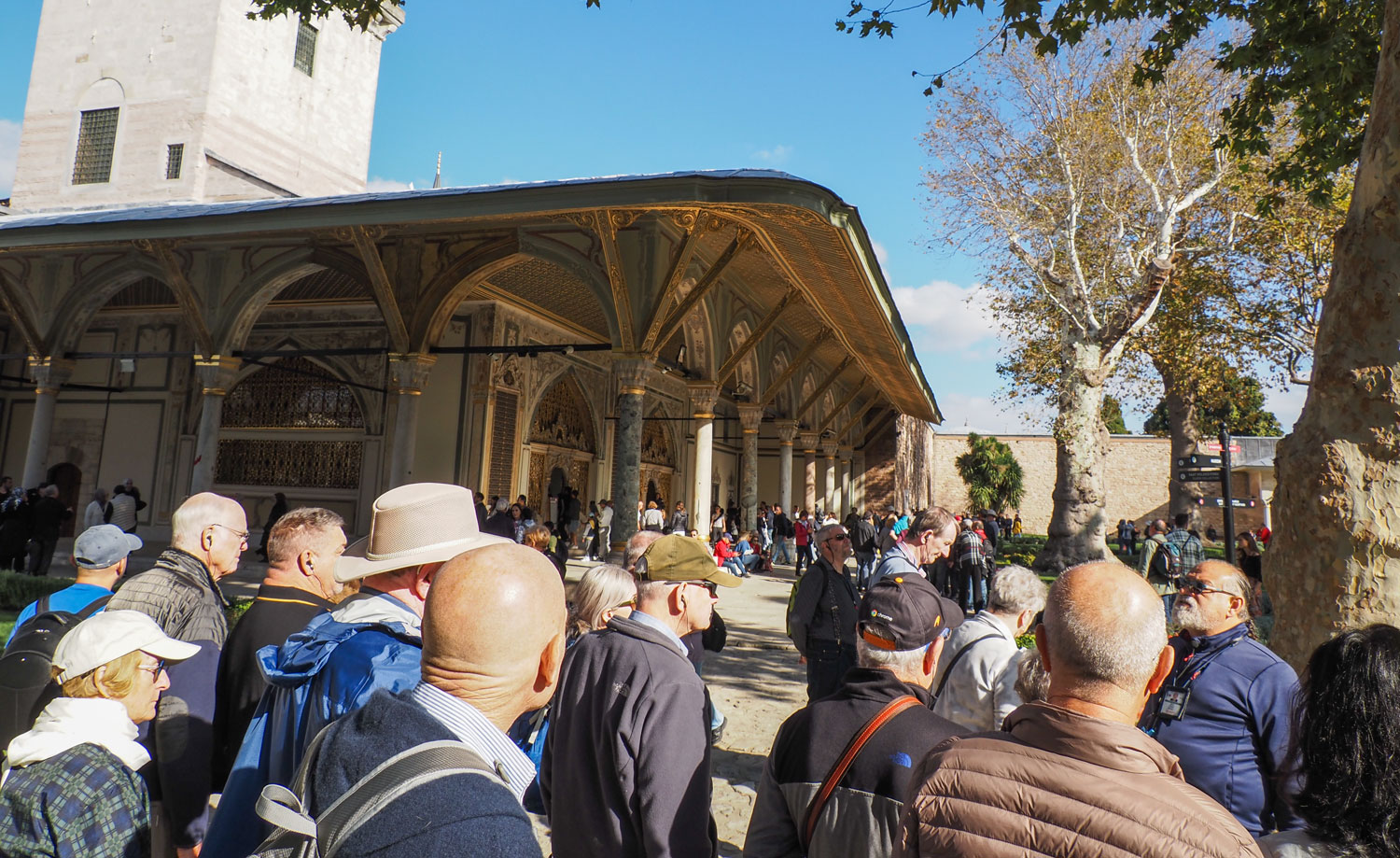
Part of the interior of the Imperial Council Chamber.
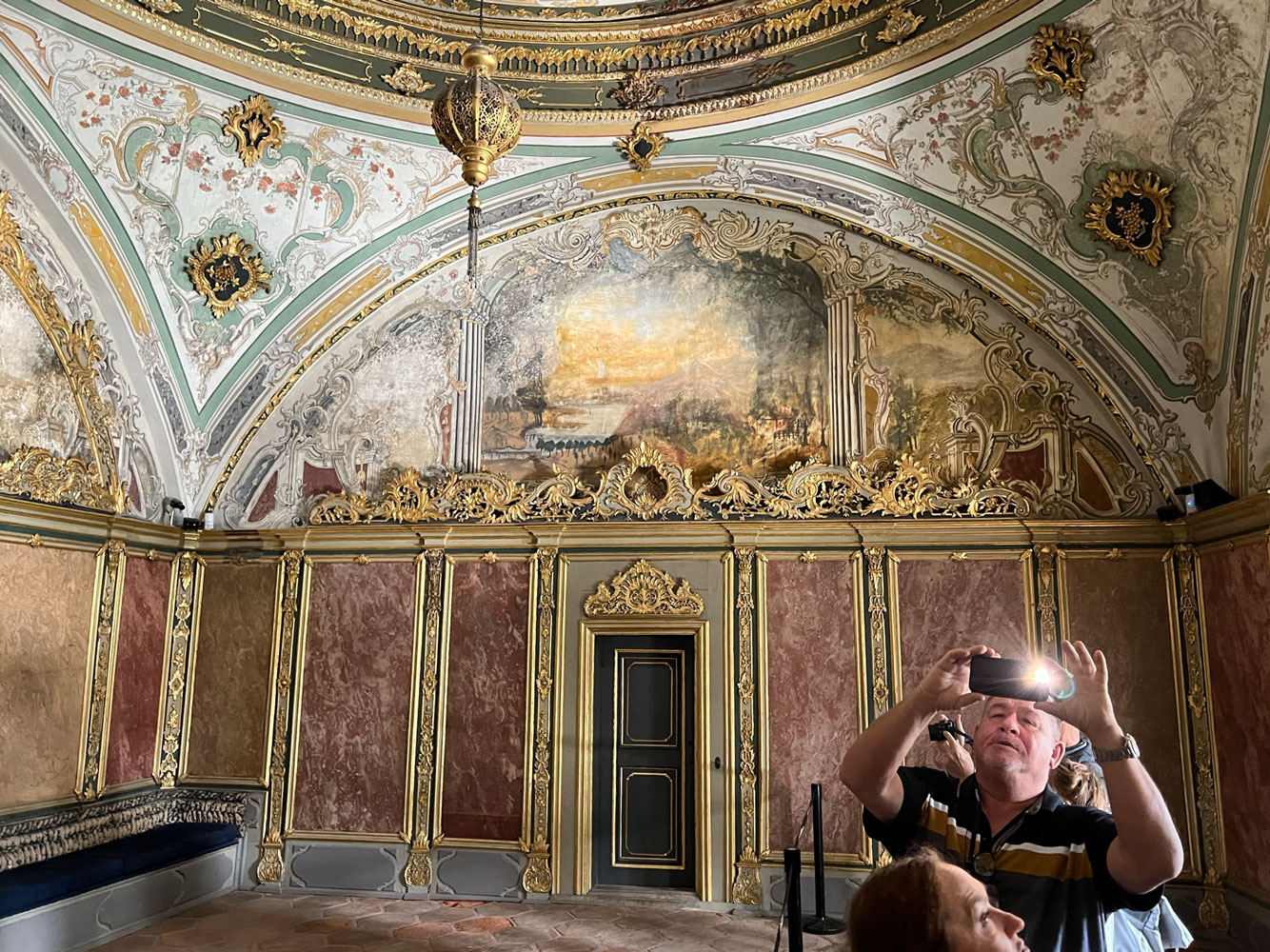
From here, we went into a museum of military items. A coat of armor, and a helmet.
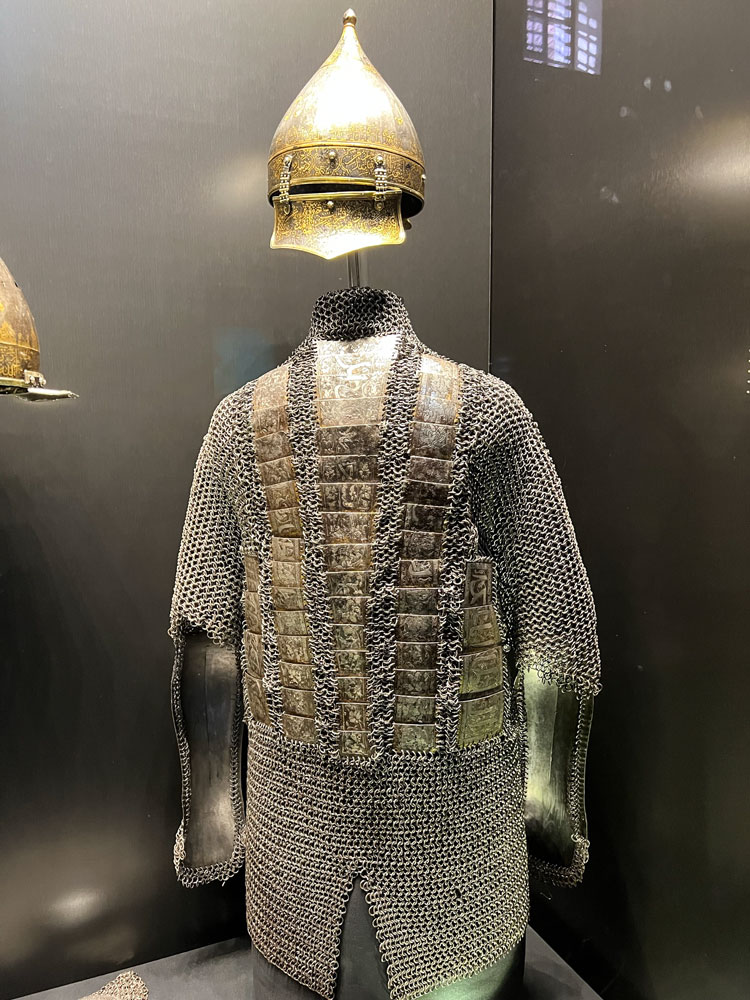
A jeweled dagger, a ceremonial gift, not intended for combat use.
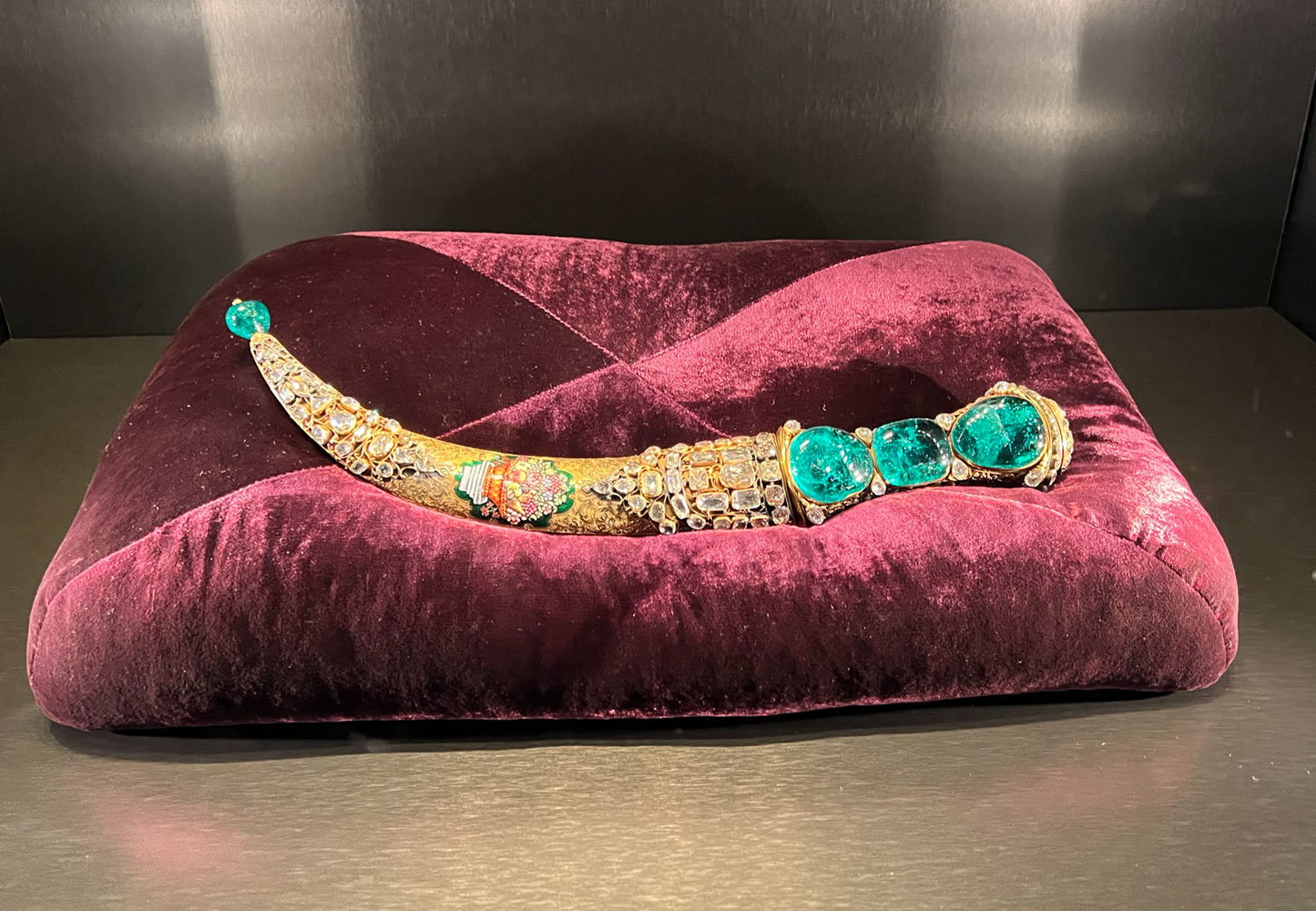
Some highly decorated muskets, again, probably gifts from other countries.
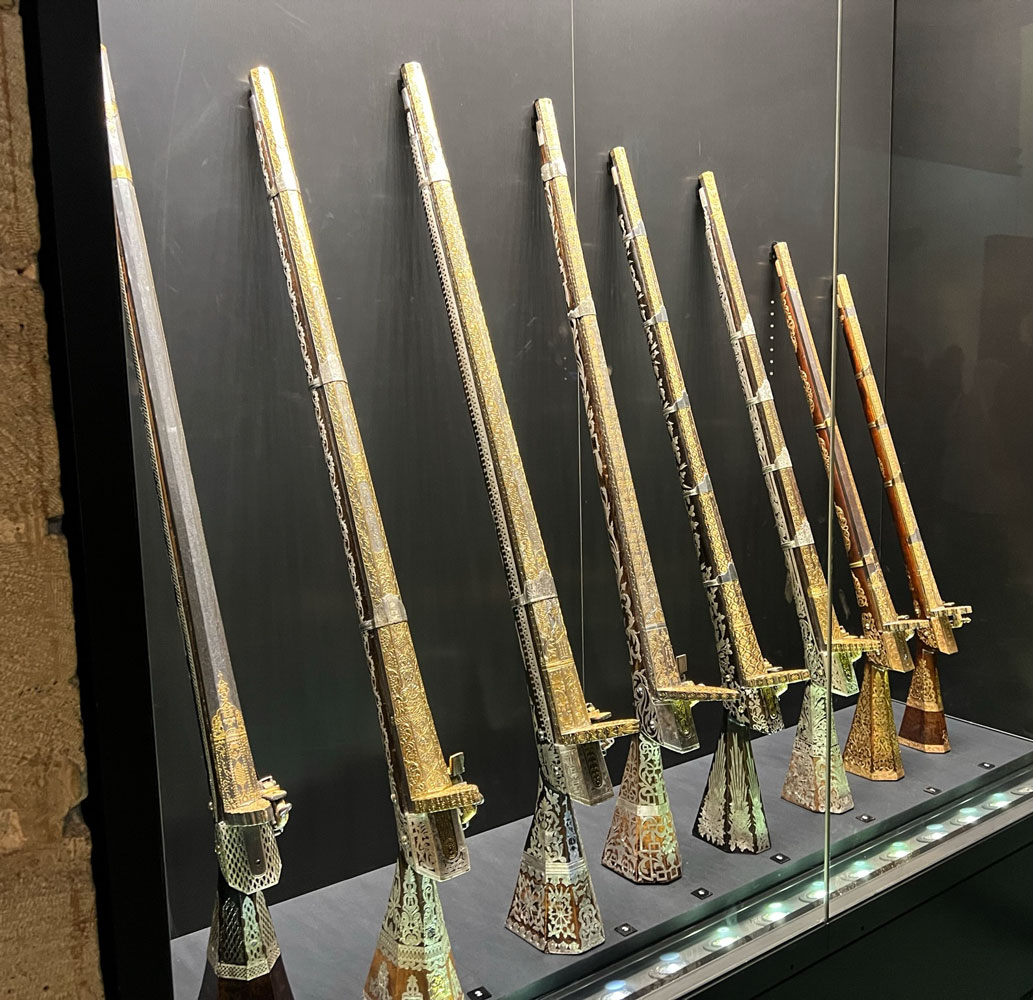
There were many items in the museum, too many to include here. From here, we went through the Gate of Felicity, to the Third Courtyard.
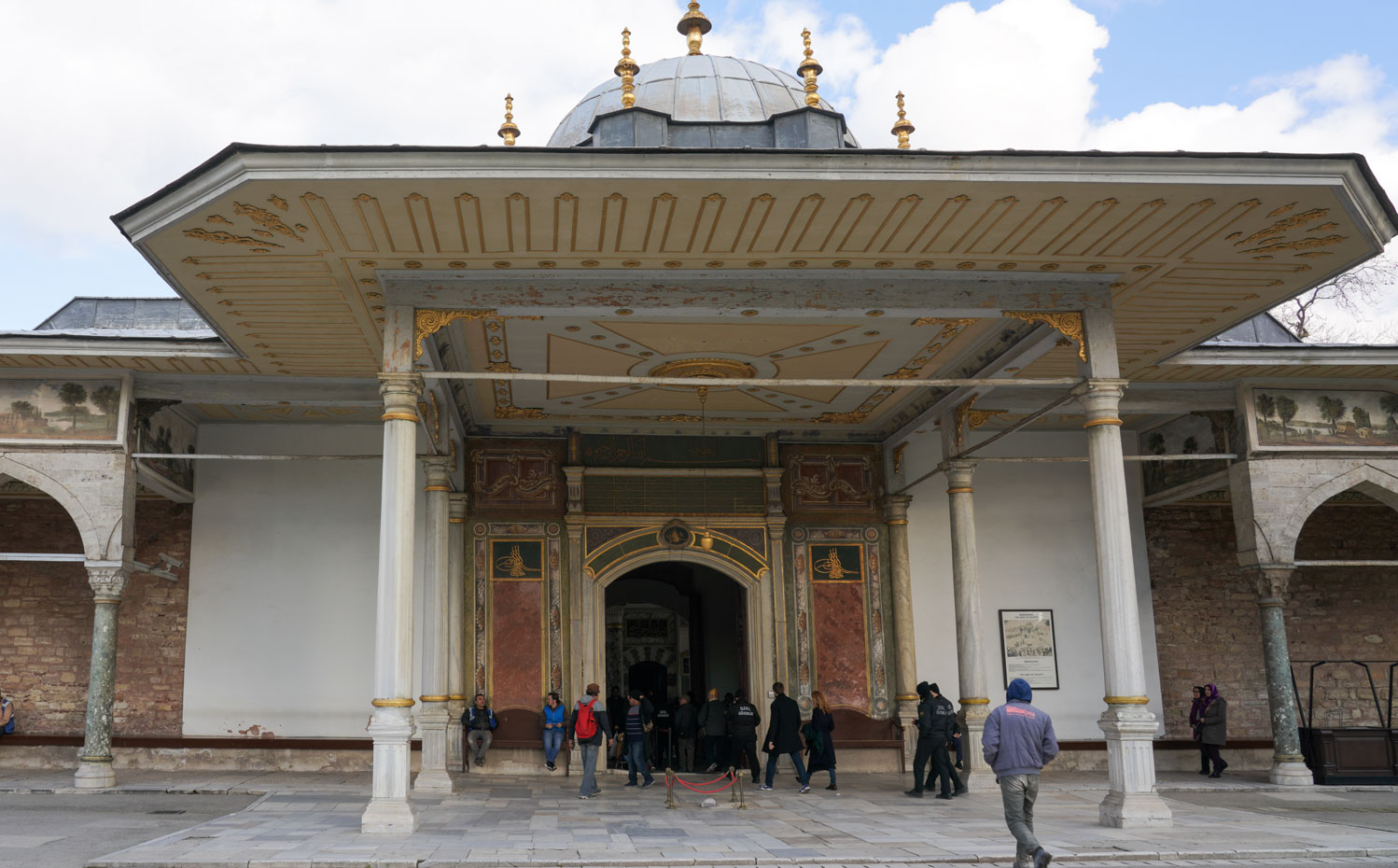
We visited the Audience Chamber.
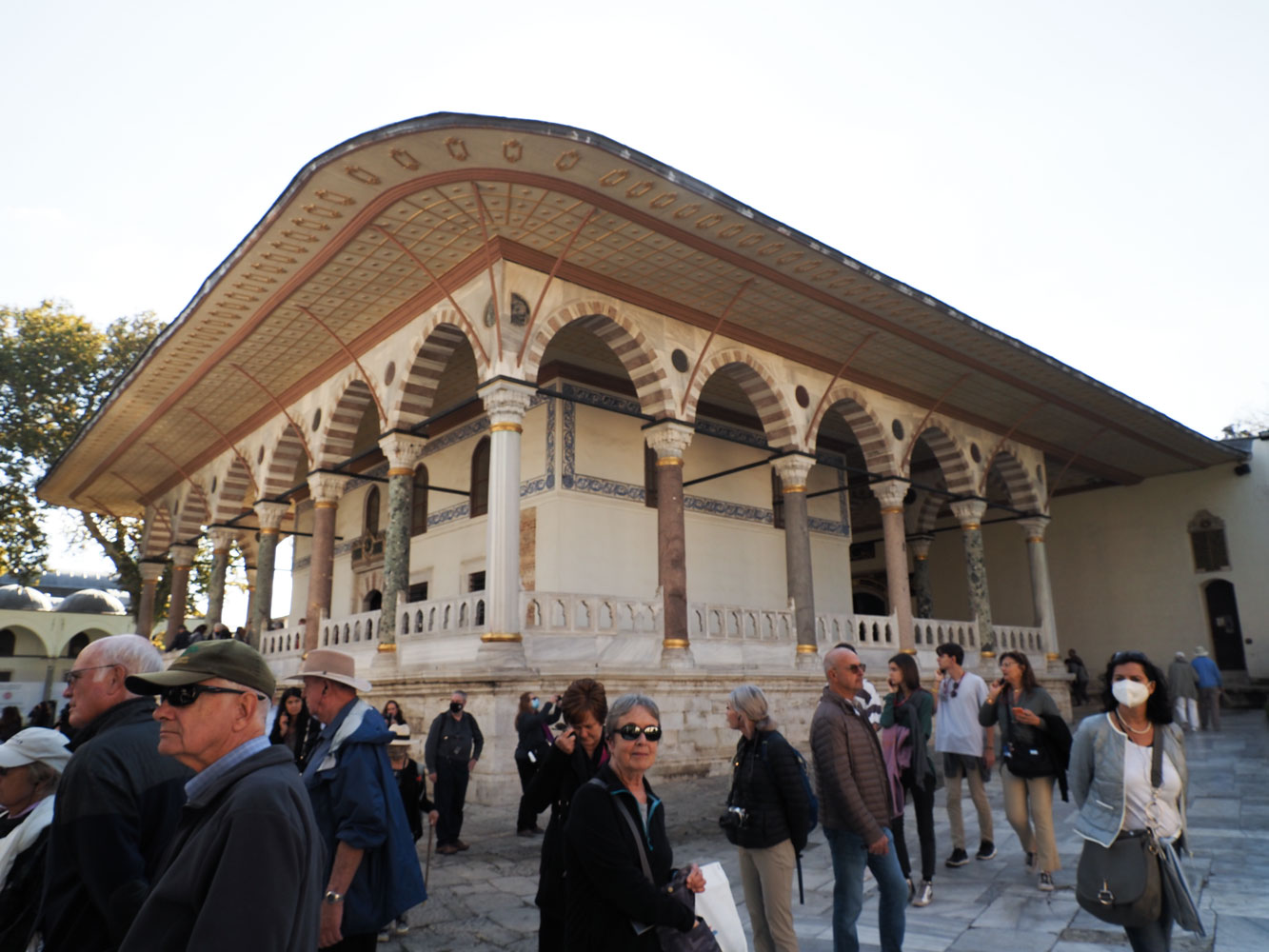
After this, we went to the Fourth Courtyard, and I suffered information overload and don't remember a lot of what things are. I'll include a few pictures without much description.
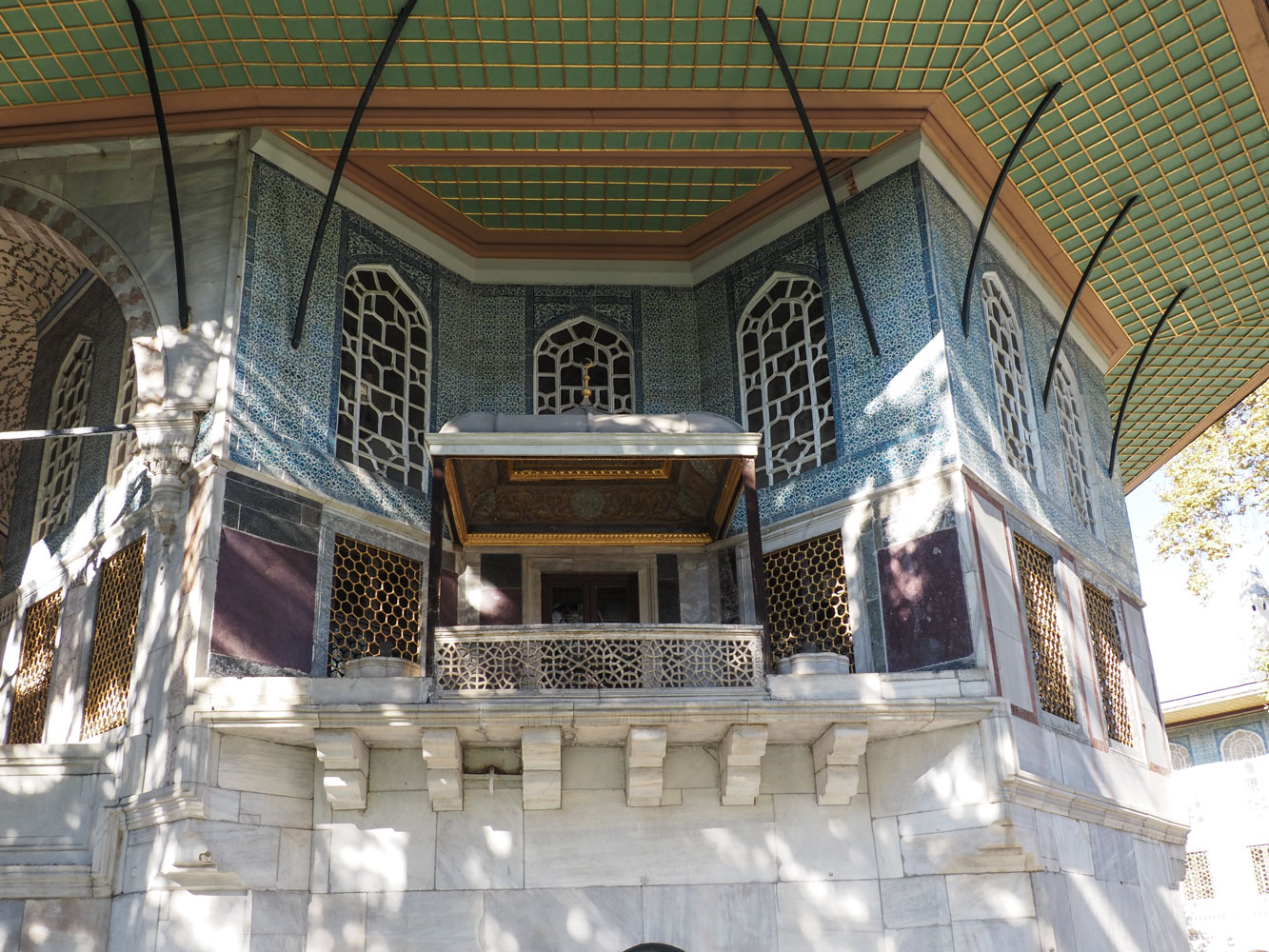
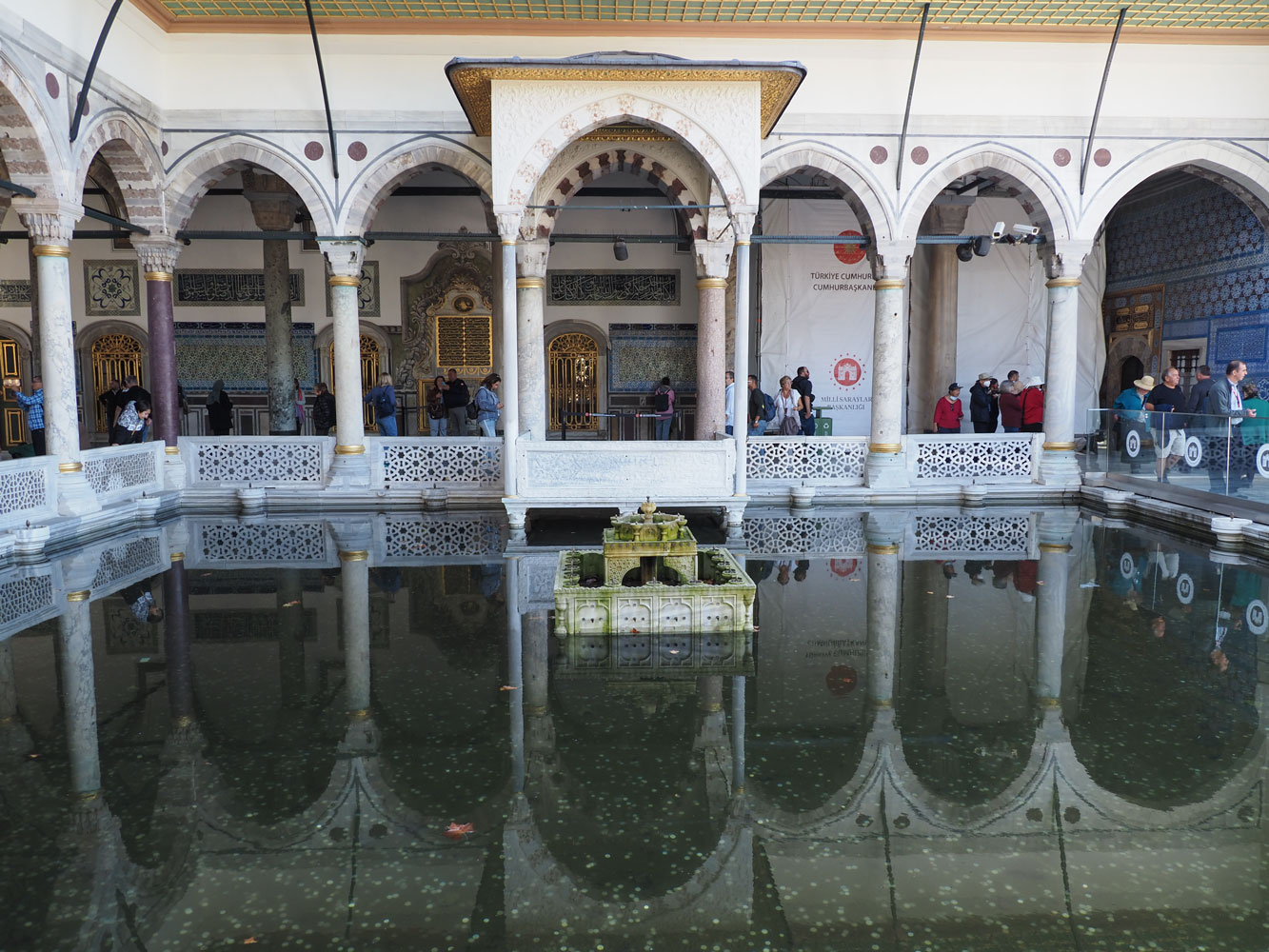
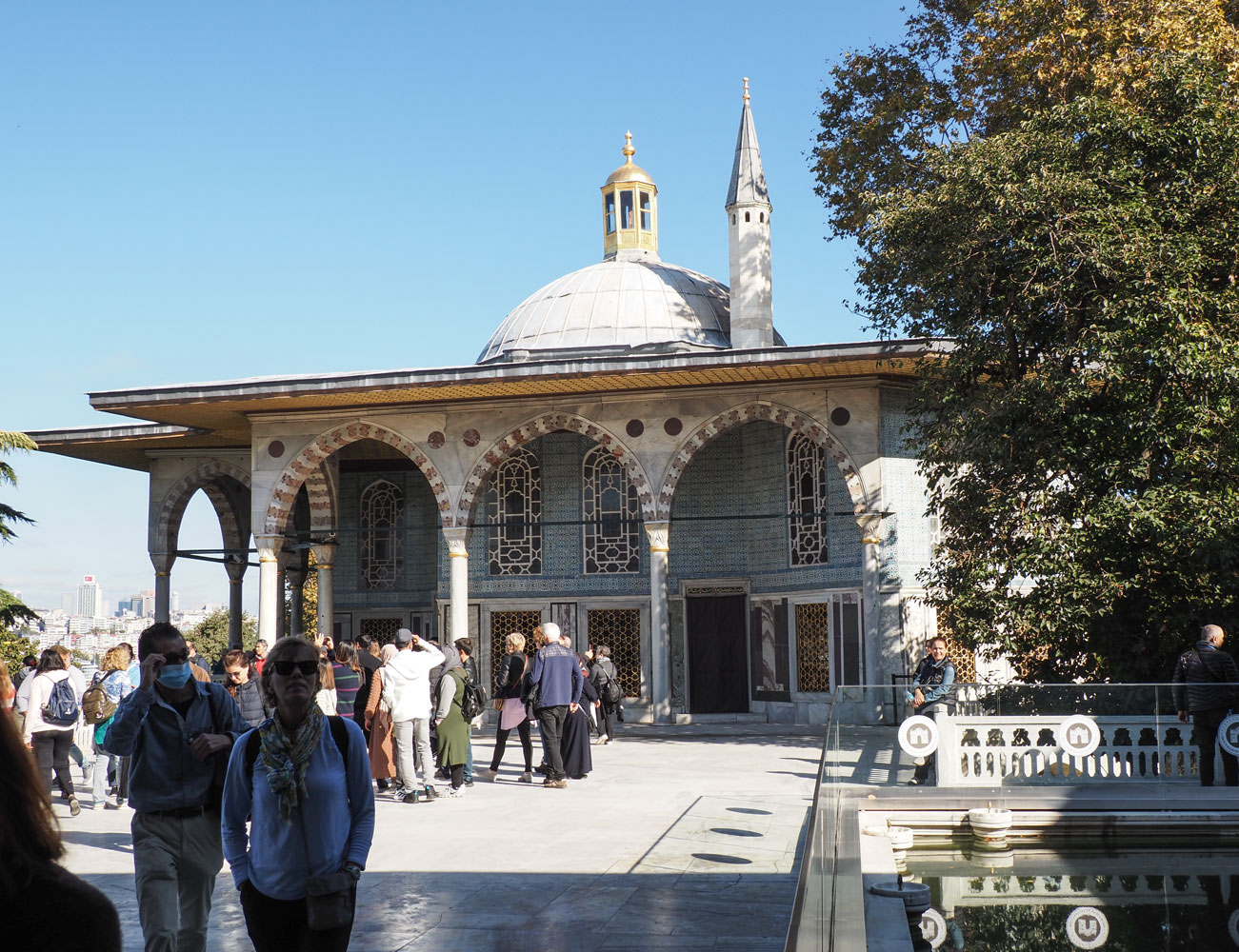
We were on a terrace and had a view of the Asian side of Istanbul. The palace is on the Golden Horn, right at the entrance to the Bosphorus.
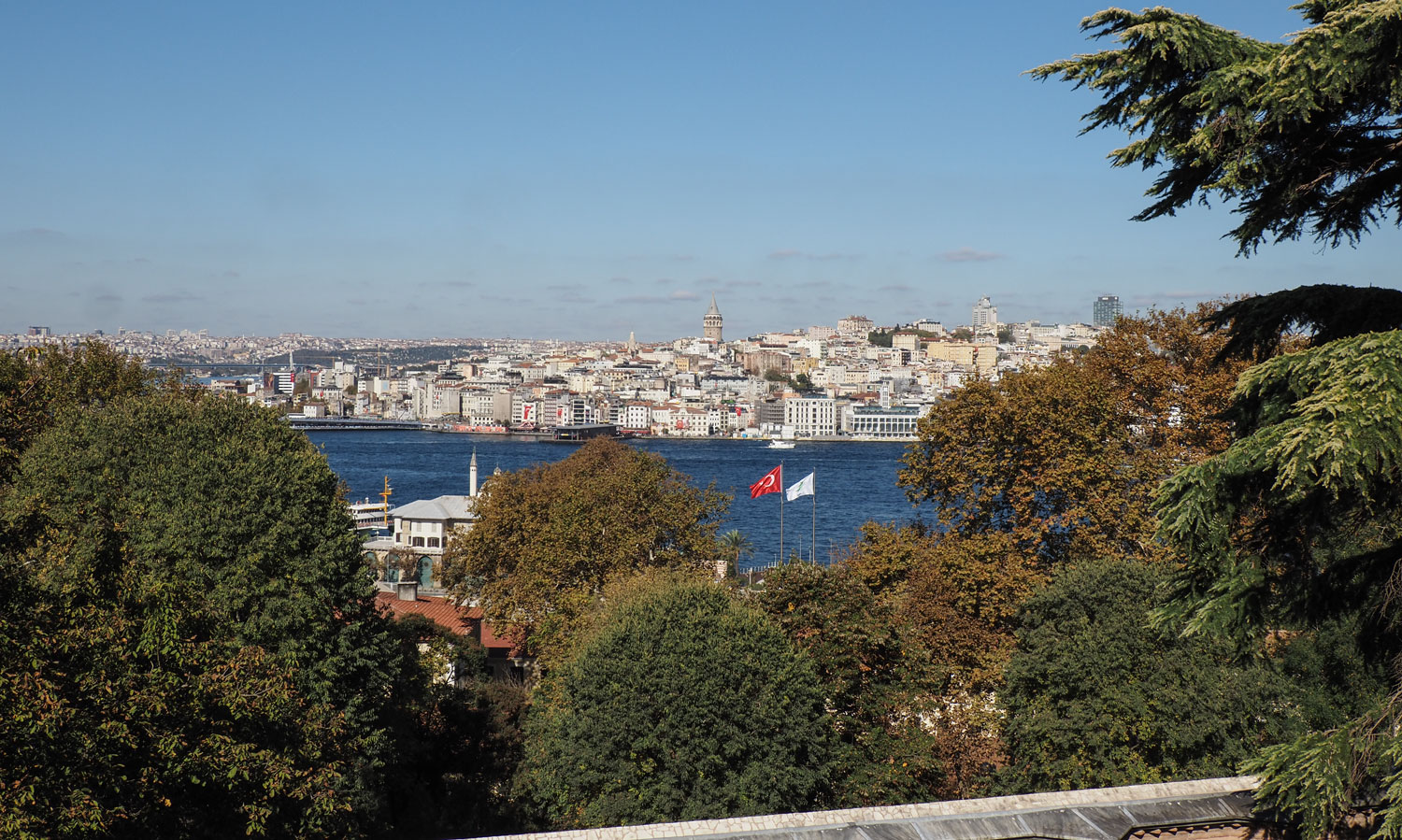
We had our picture taken on the terrace.
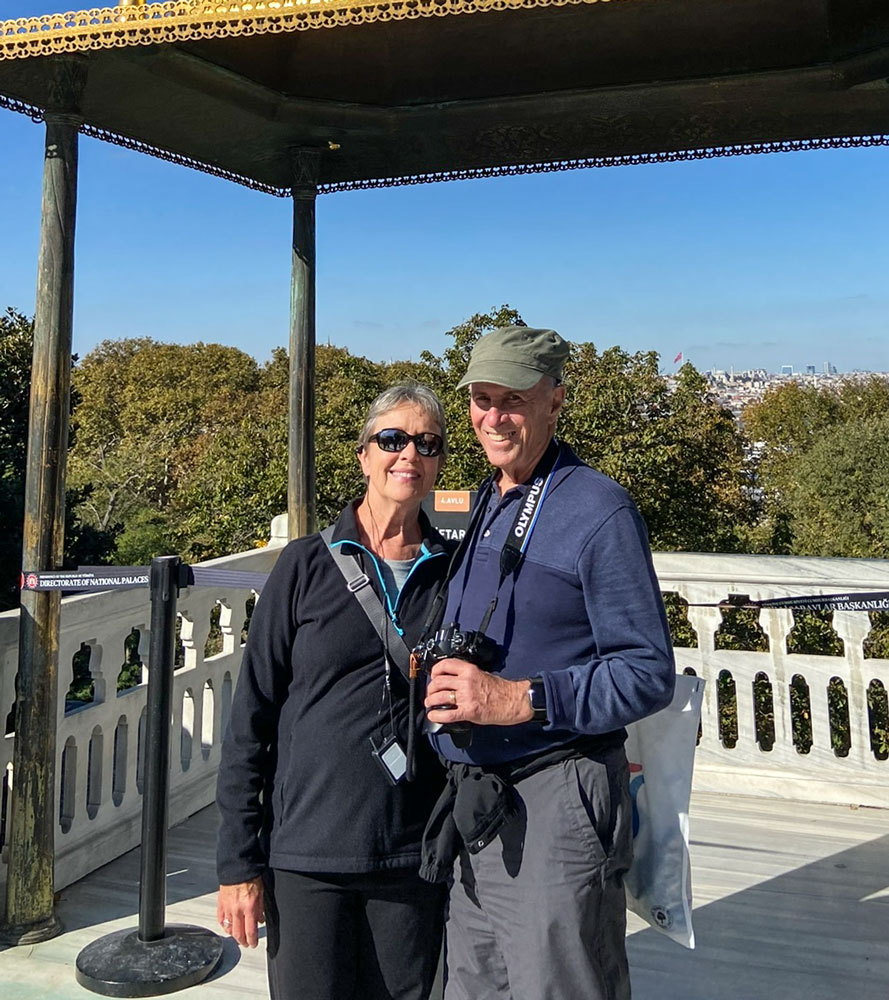
There's a whole lot more to the palace but I have to stop somewhere. From here, we exited the palace and headed to the Blue Mosque.
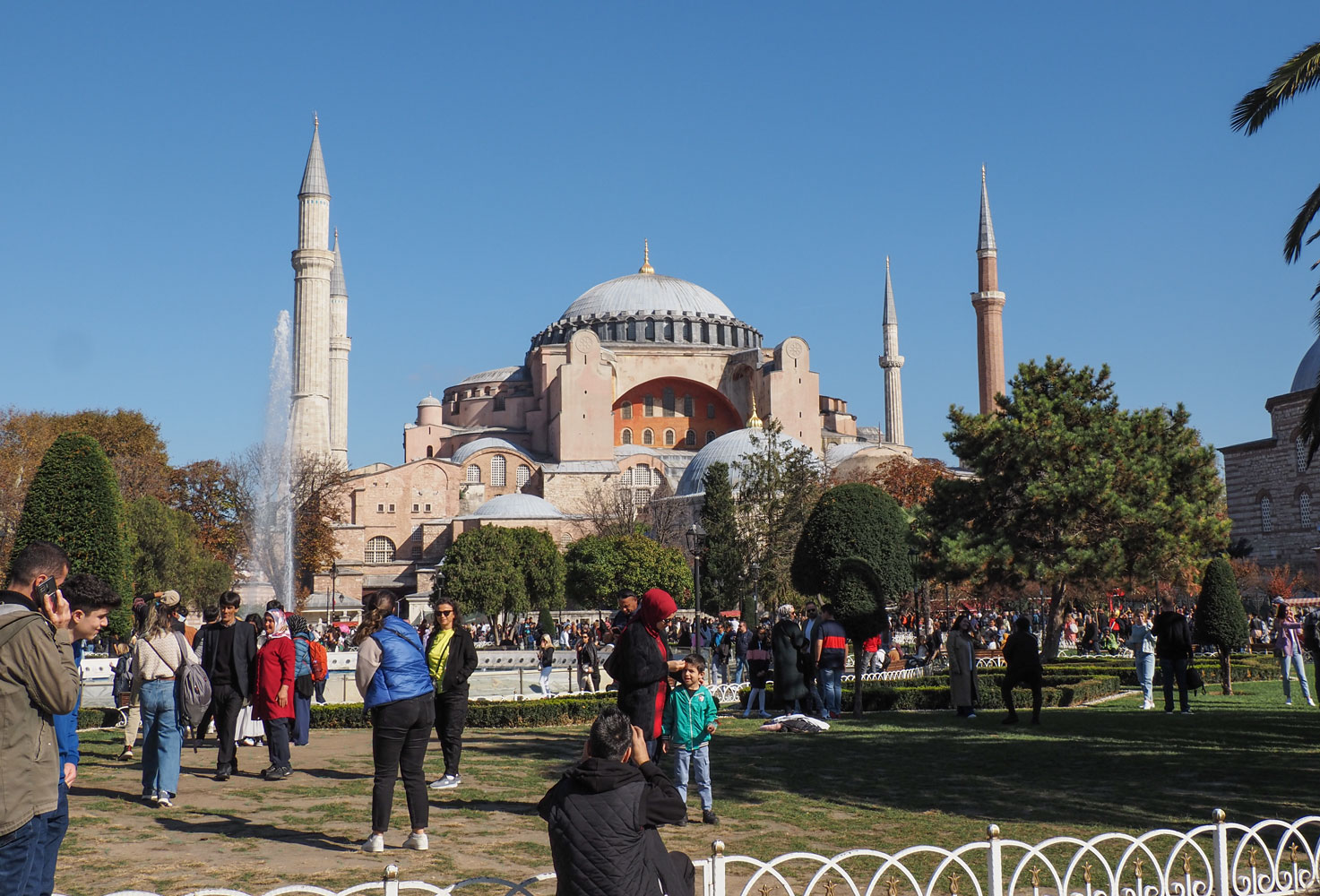
But when we got there, the mosque was closed for renovation. I went on the web to look for pictures of the interior and, surprisingly, I didn't find any good ones, except for commercial stock photos. Here's the best I found that I didn't have to pay for. (Wikipedia image)
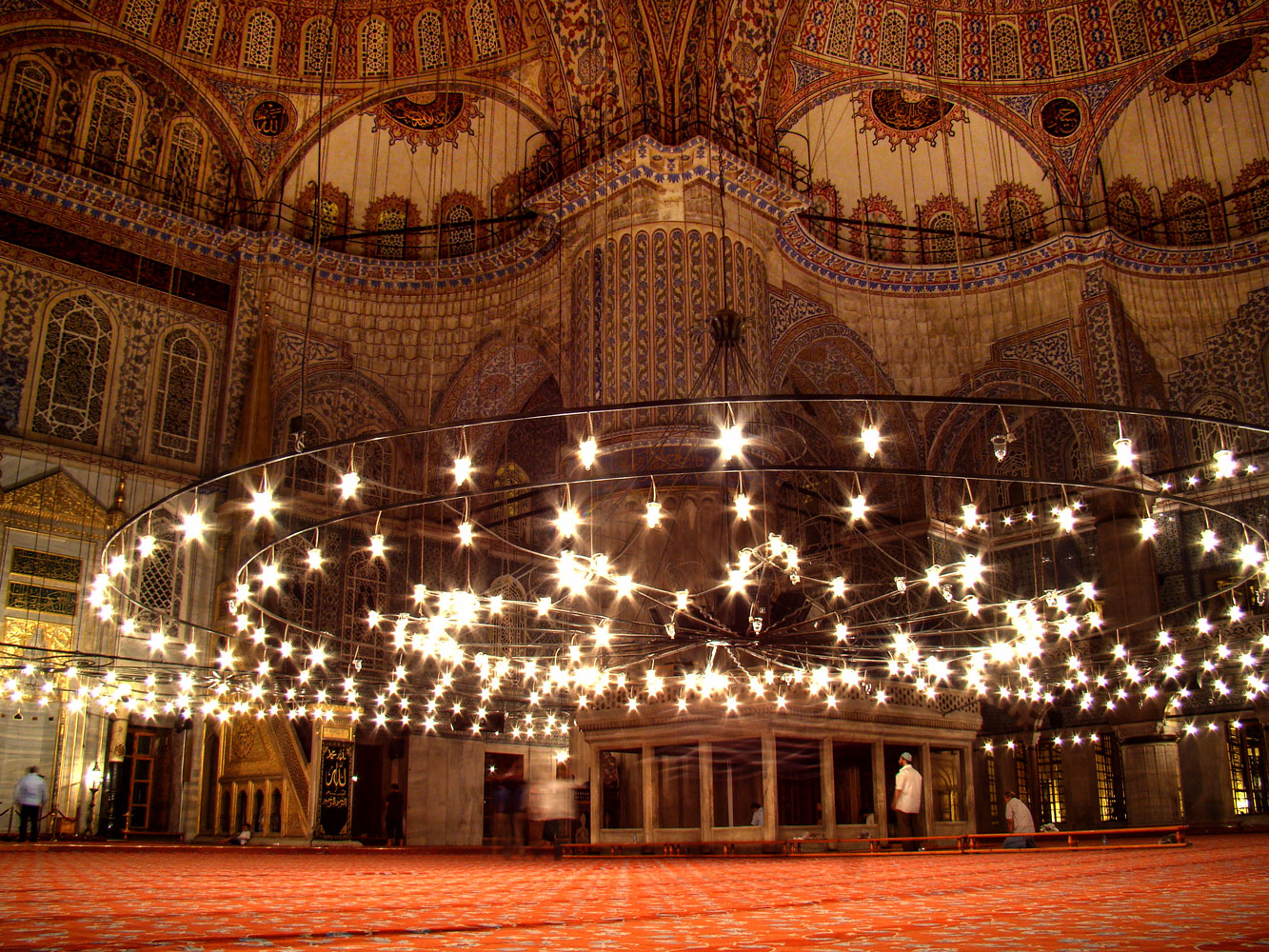
A view of the ceiling. The name "Blue Mosque" comes from the approximately 10,000 blue tiles used inside. (Wikipedia image).
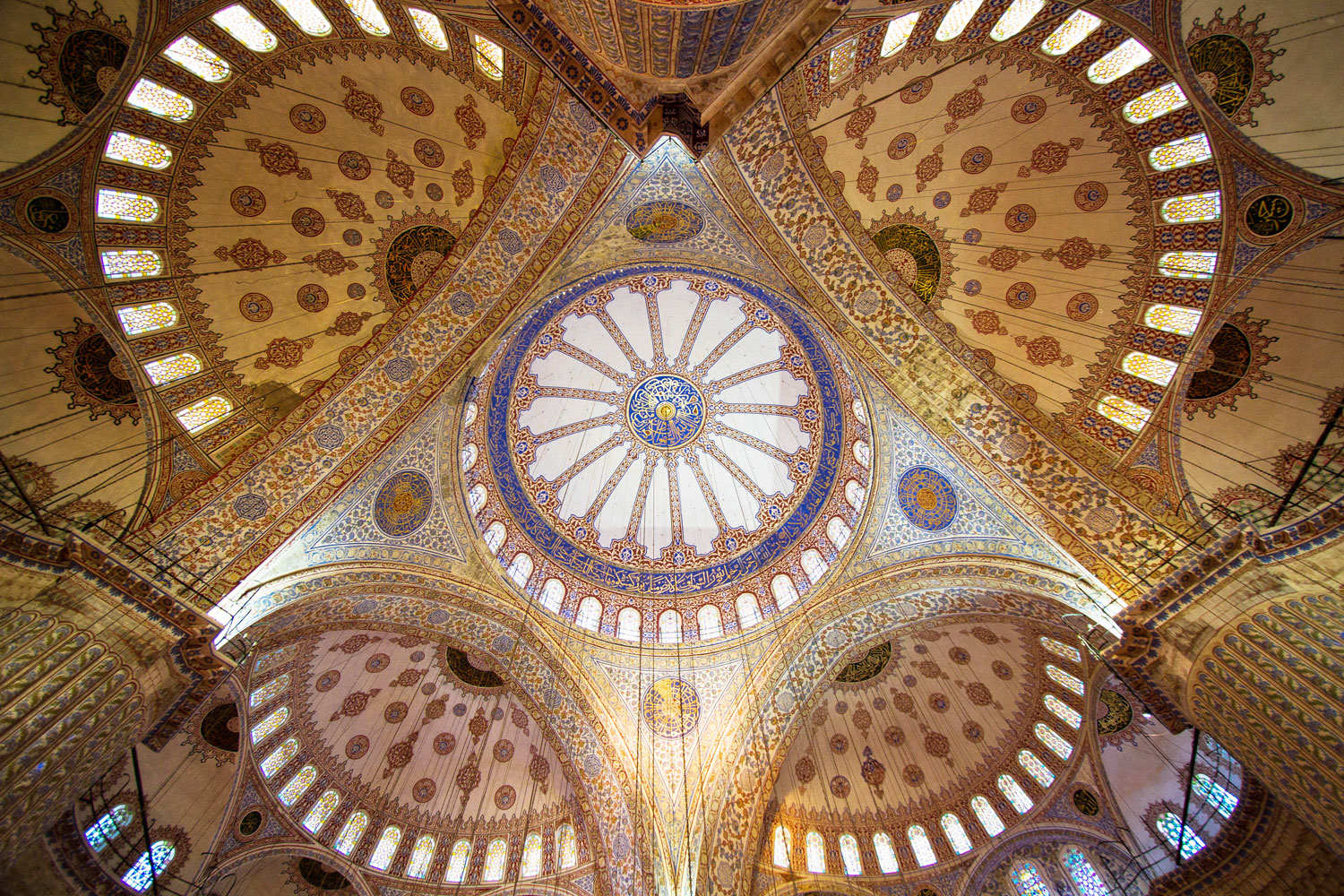
The Wikipedia article on the Blue Mosque will give you much more detail.
We left the area of the Blue Mosque and headed to the Hippodrome, which is now Sultanahmet Square. This picture shows the Obelisk of Theodosius in the square.
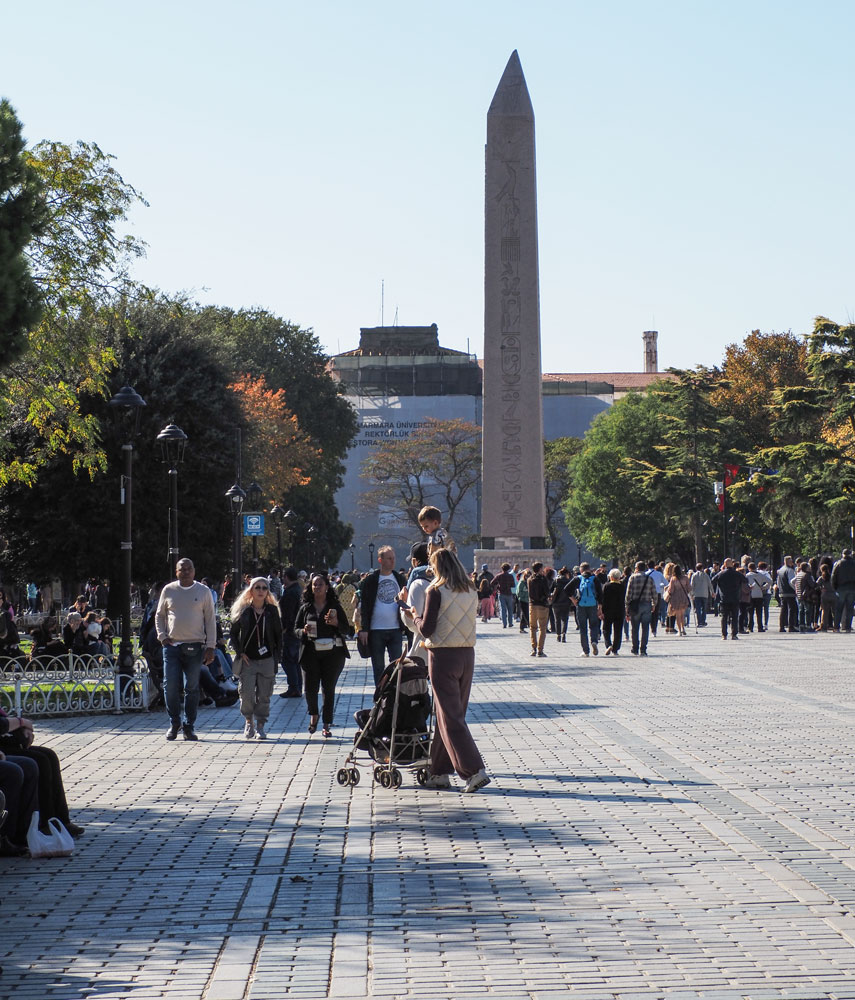
The hippodrome was built about 203AD and used for chariot racing, but by about 1200AD the Hippodrome had fallen into disrepair.
A few pictures from the Square. Here's the German Fountain.
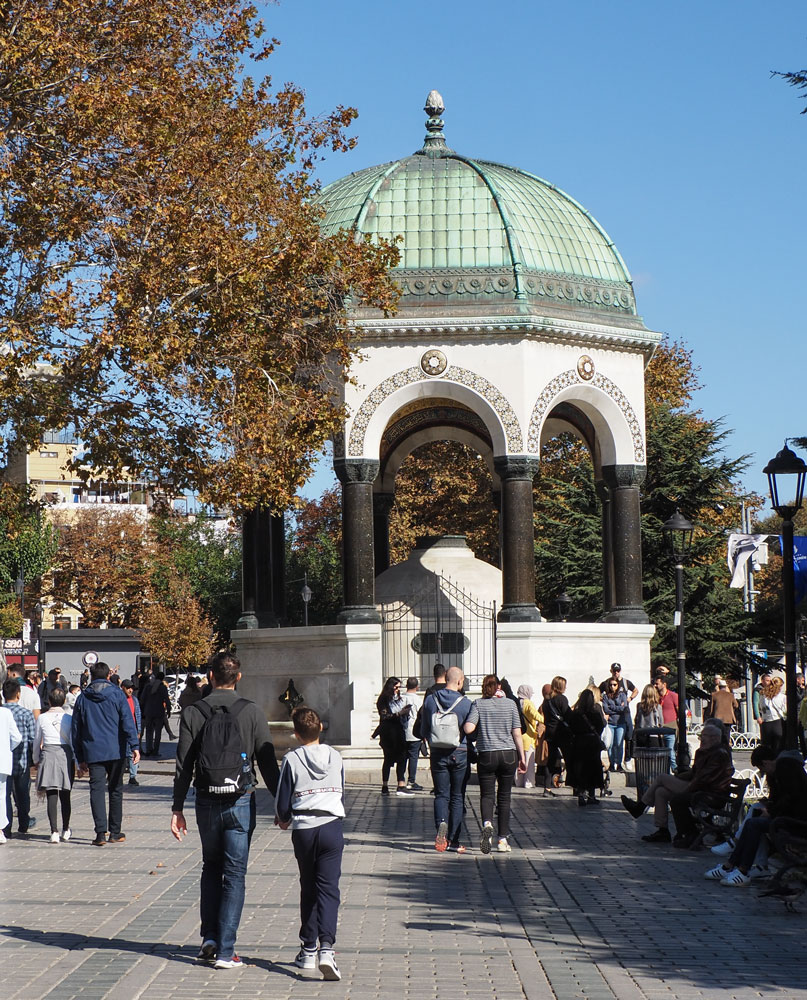
And the Walled Obelisk.
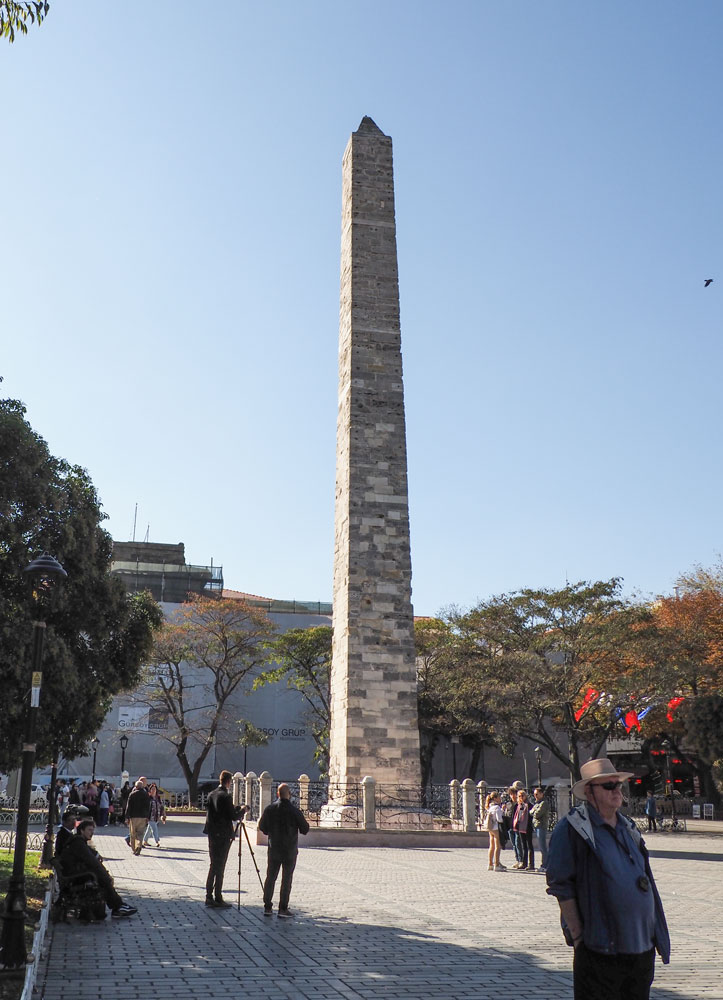
The Serpent Column as it is today. It is bronze. Next to the picture of it today, is a drawing of what it looked like originally.
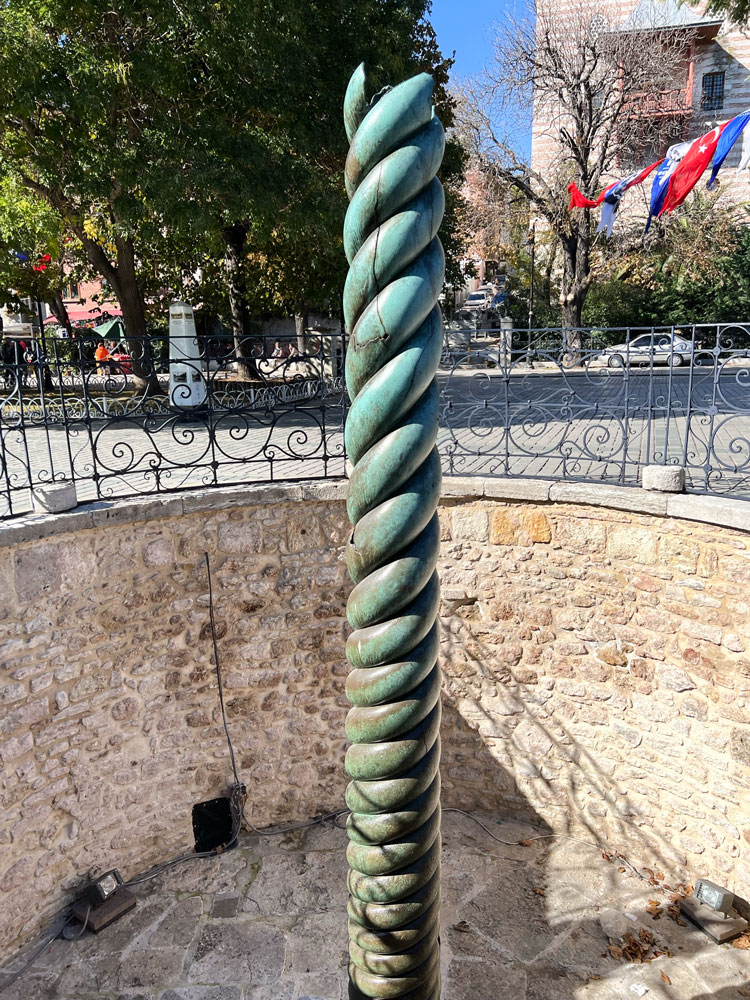
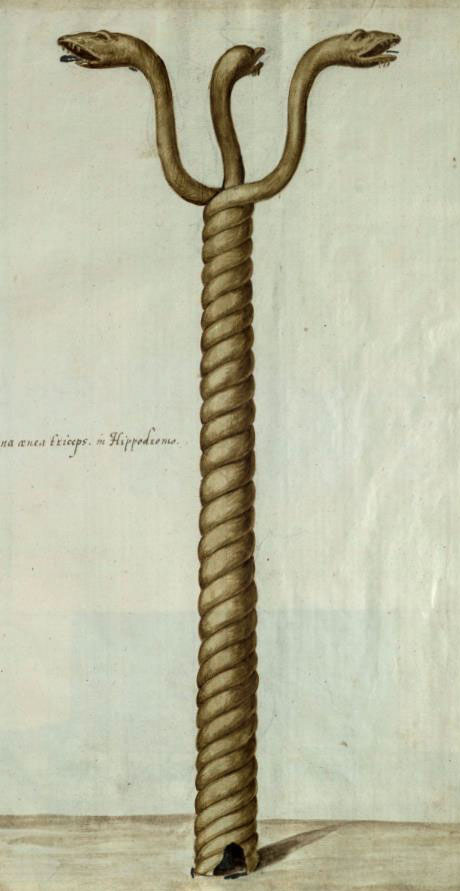
Then we left the Hippodrome and headed to lunch at the Hamdi Restaurant .
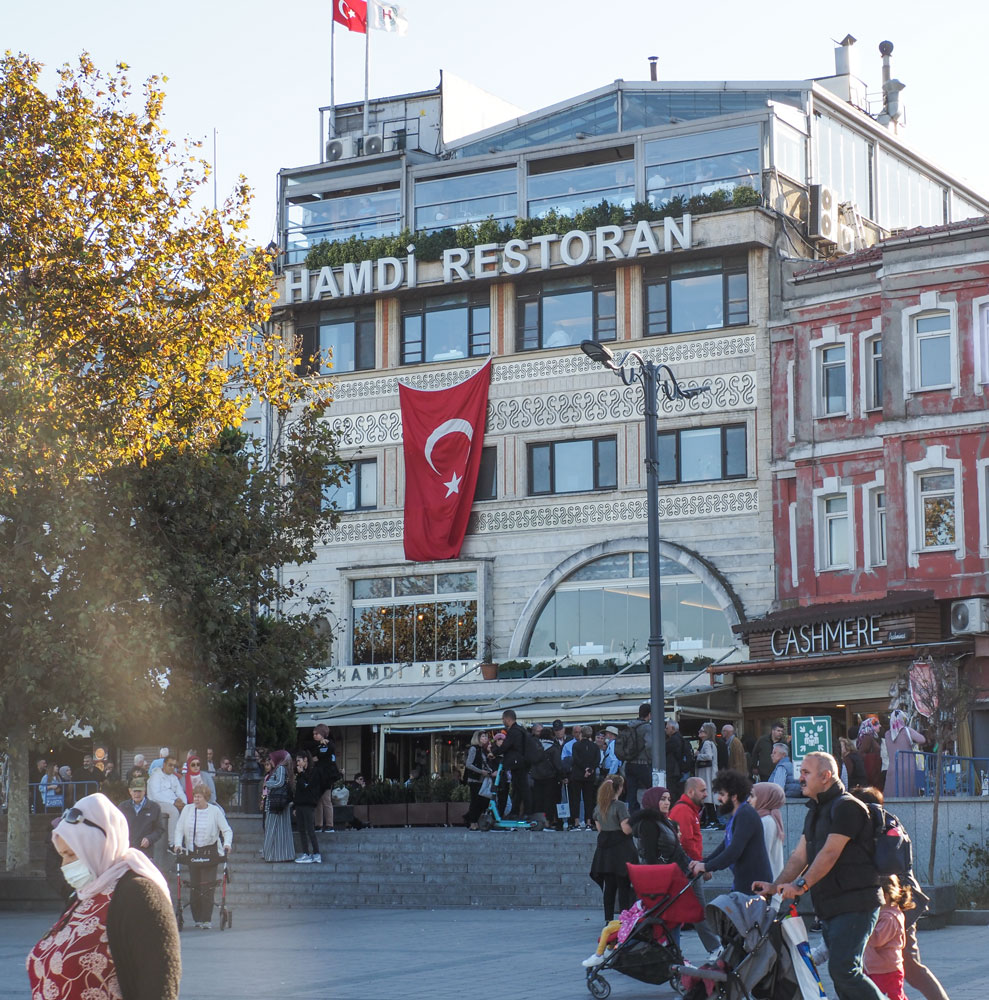
There were tables for 12 people and the menu was pre-arranged for Turkish foods. While the food was not bad, I knew that when I got back home, I would not be seeking out a Turkish restaurant.
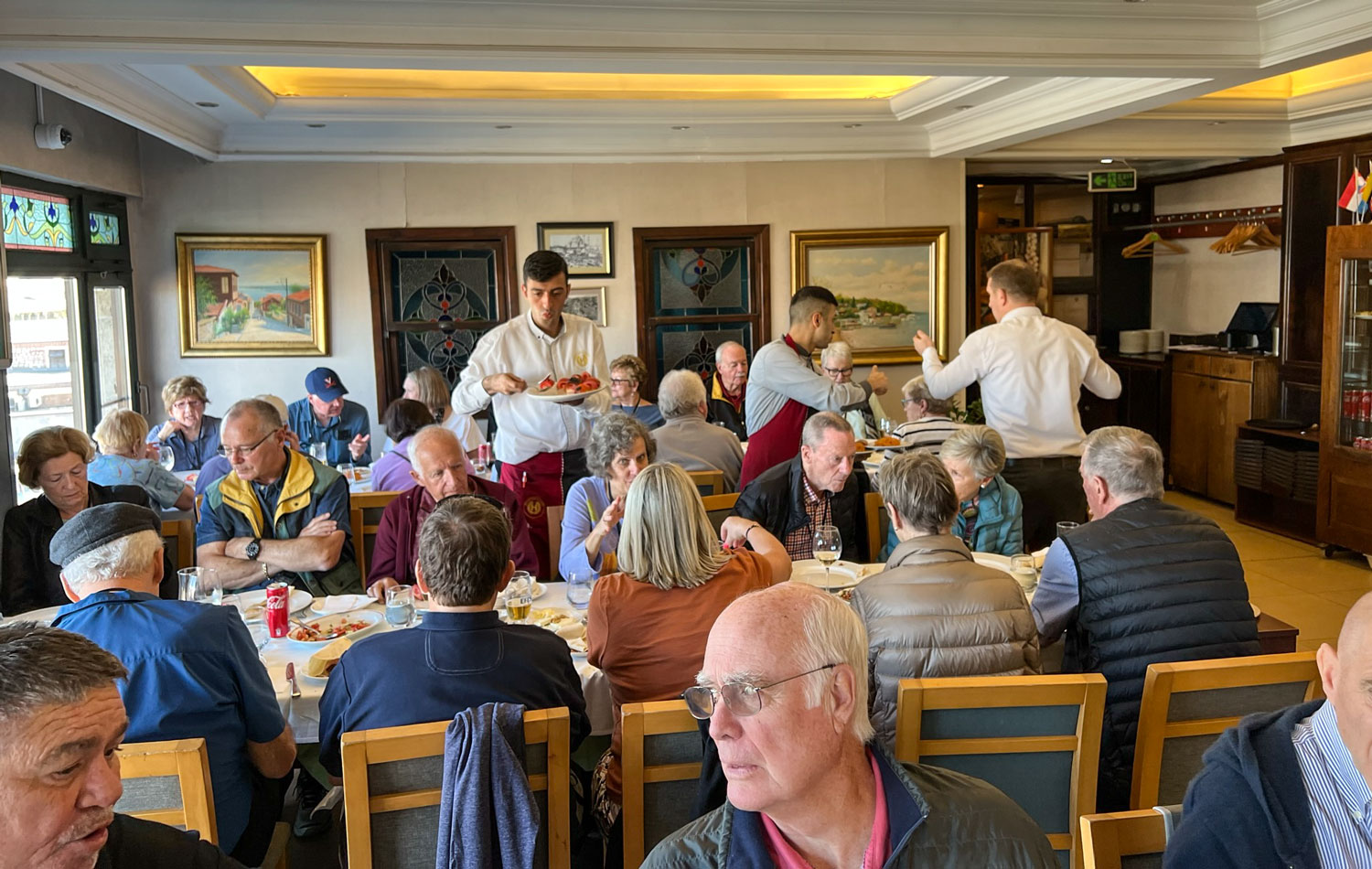
After lunch, we went to the Spice Bazaar, which is near the restaurant.
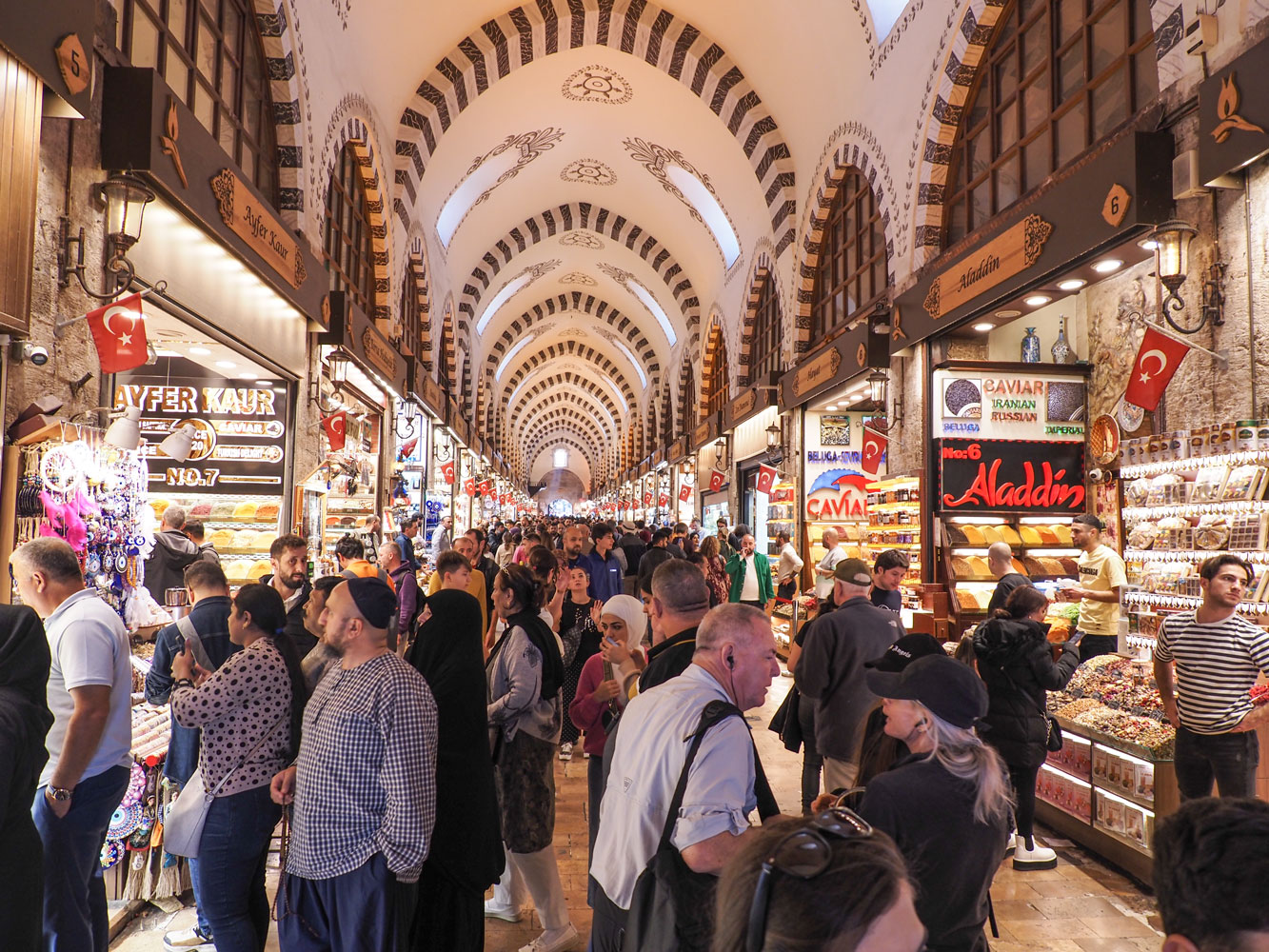
Some of the spices and nuts in the bazaar. Prices are in Turkish lira.
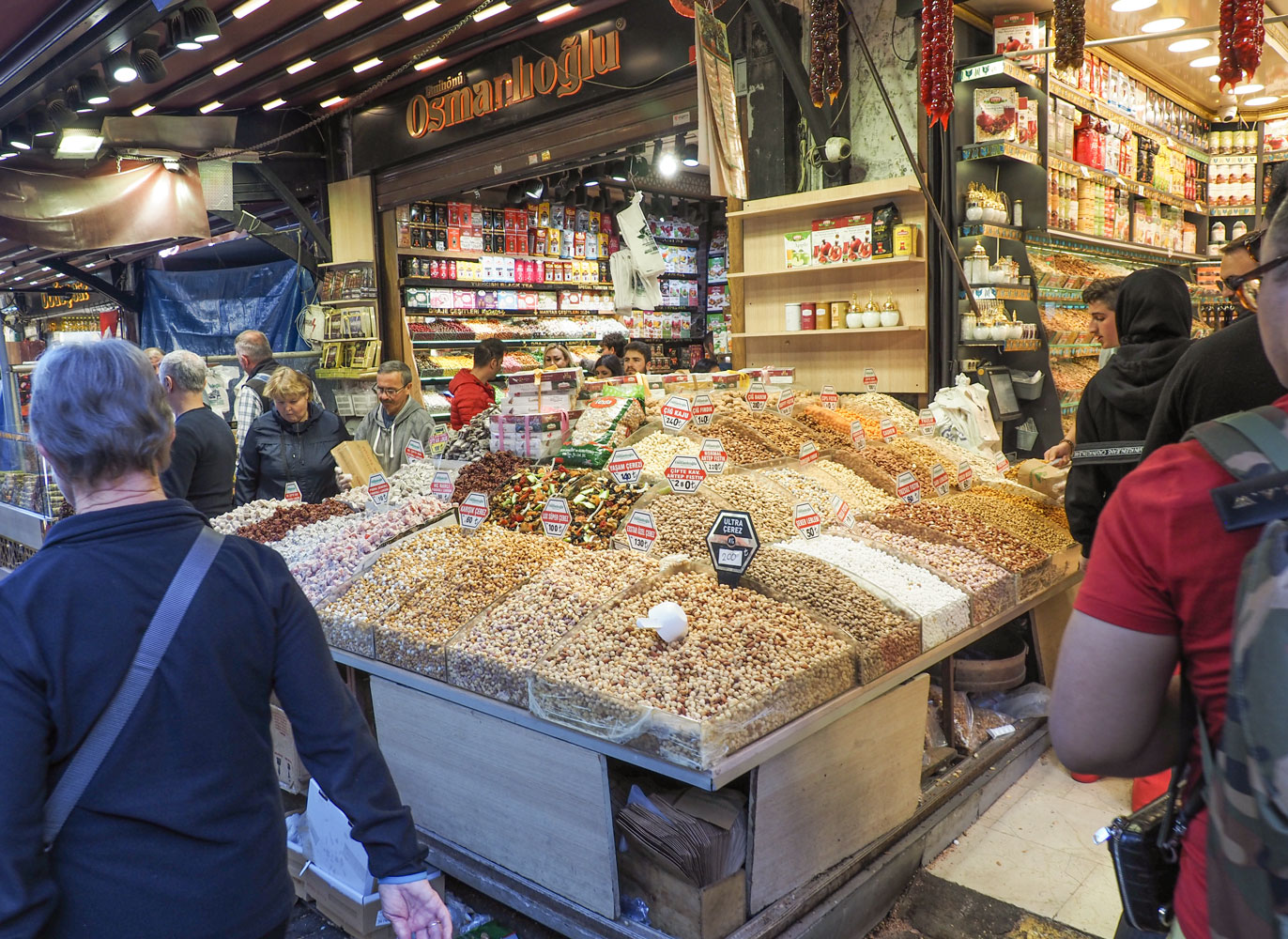
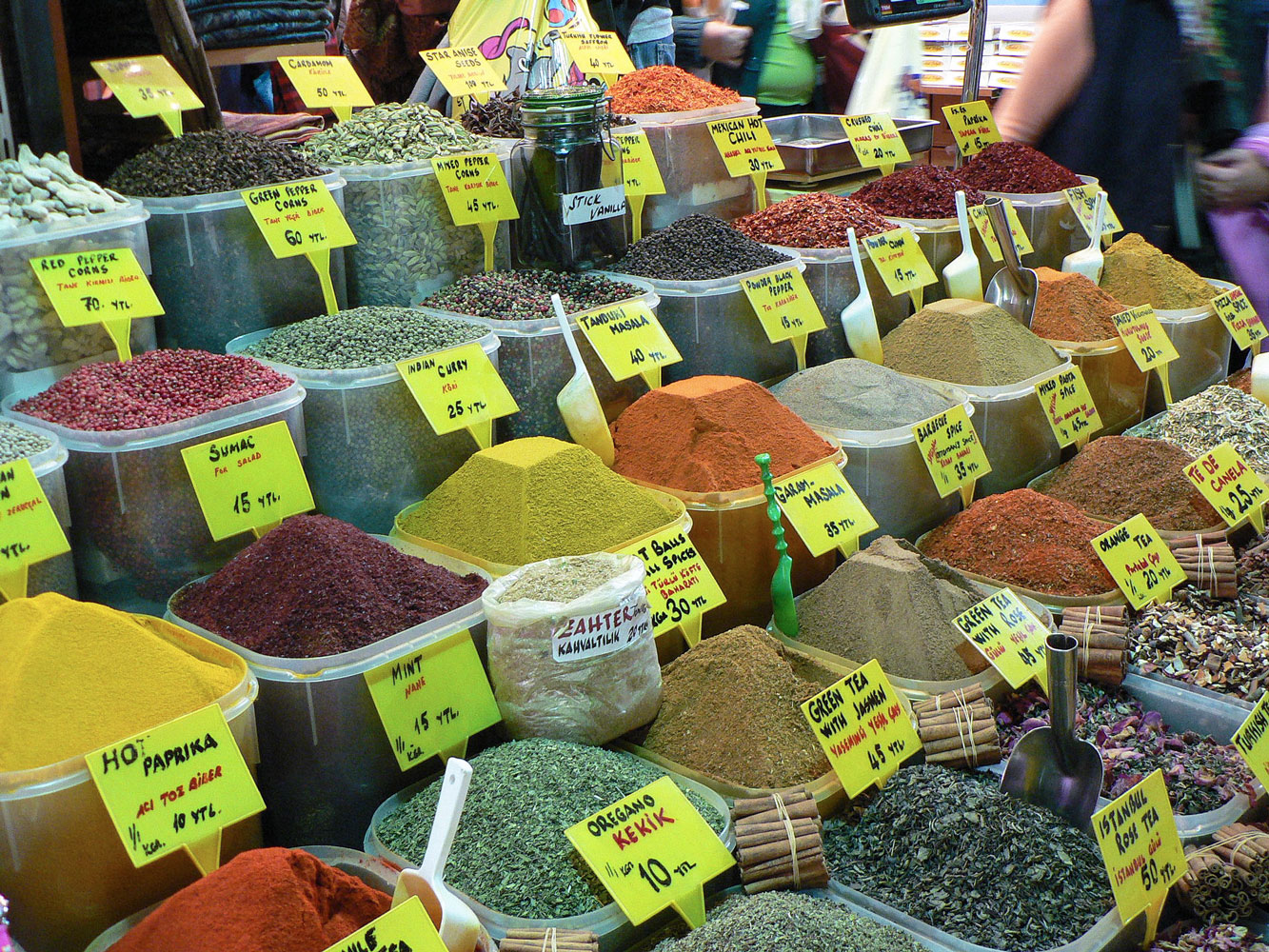
Here's a stand selling olives, and what looks like string cheese.
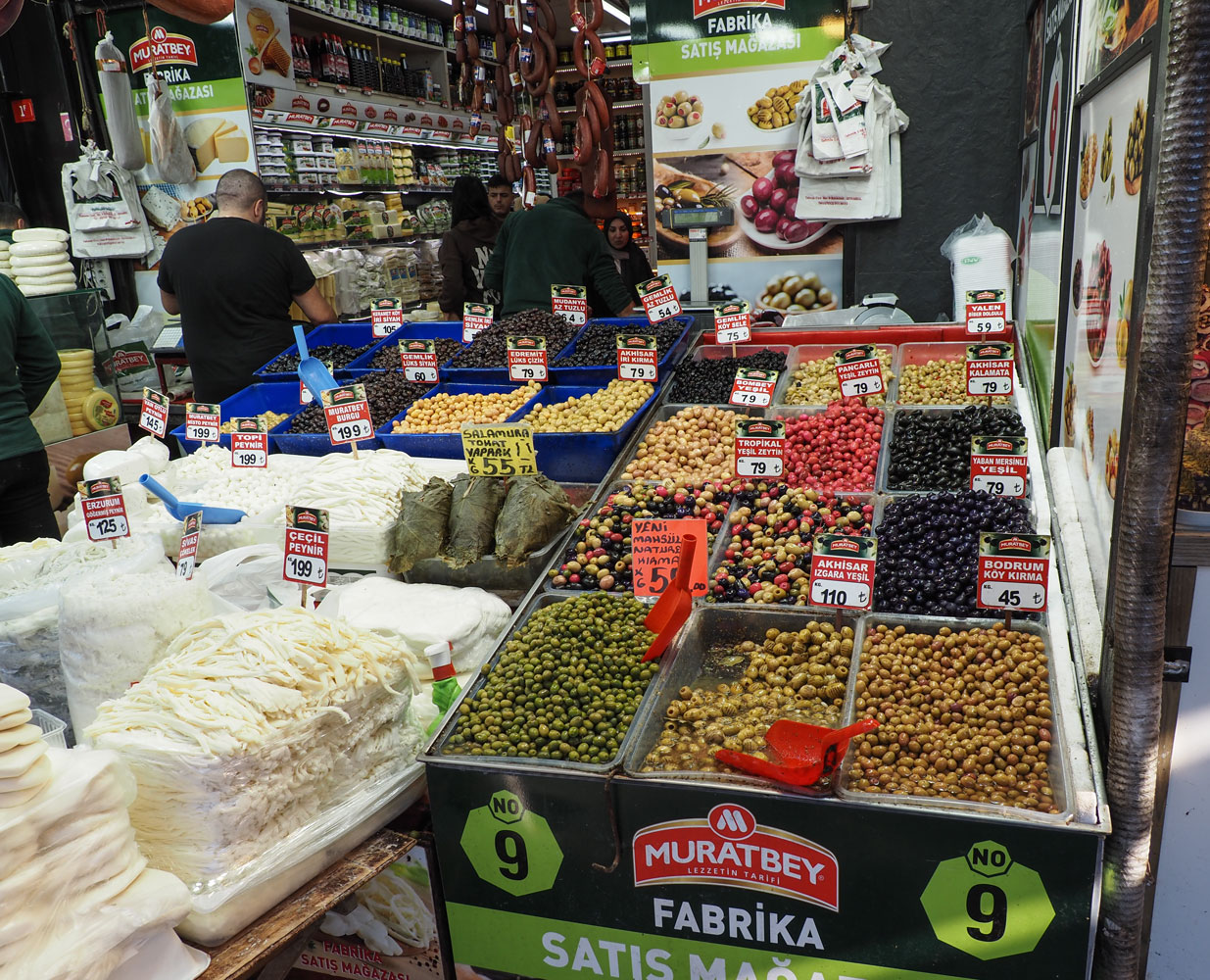
There were many stands outside the Spice Bazaar selling different foods. This one is selling roasted corn-on-the-cob and roasted chestnuts. The corn was about $0.75.
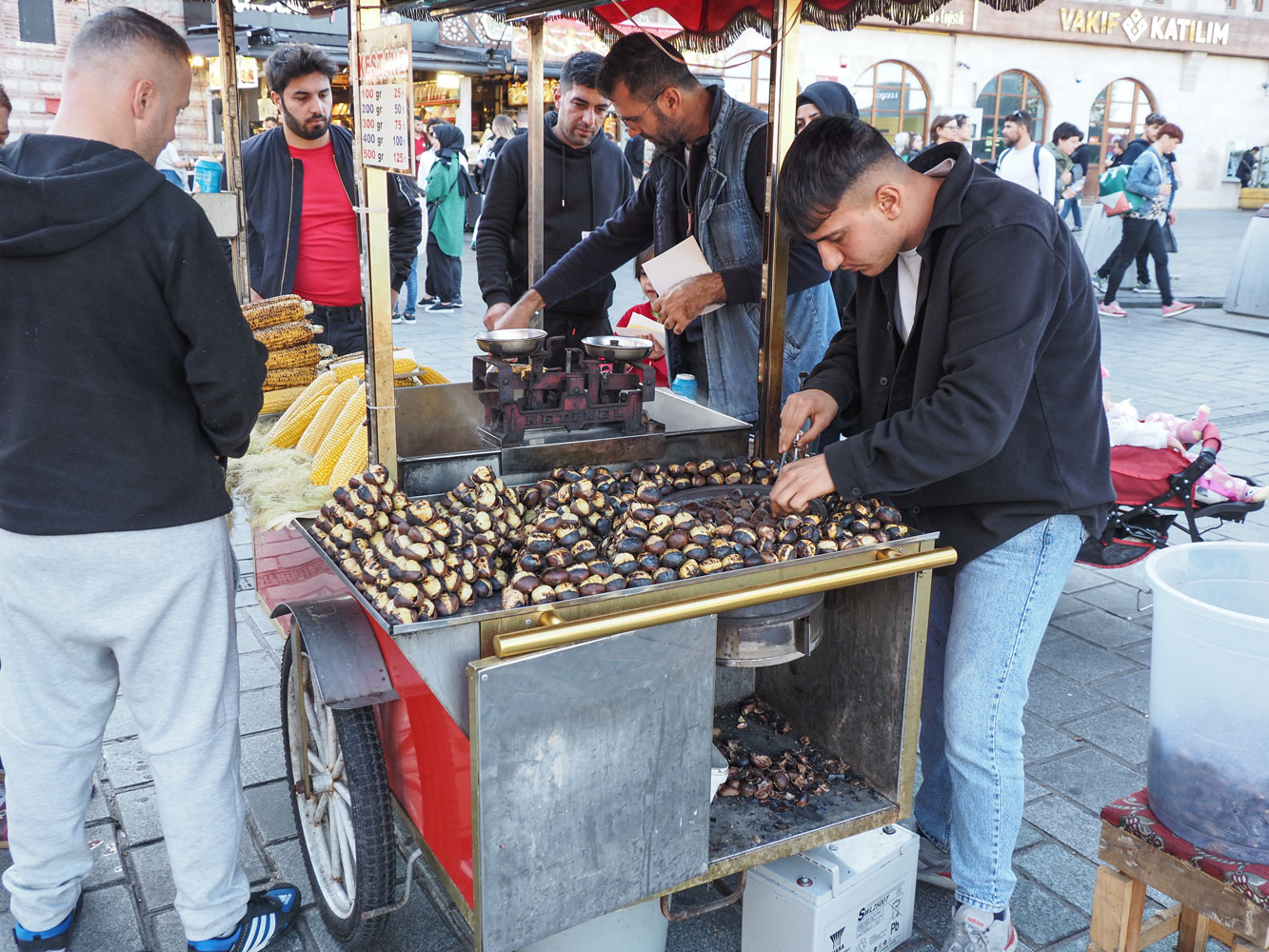
A look at the "corn side" of the stand. The roasted ears are resting on corn silk. The roaster is fueled by charcoal.
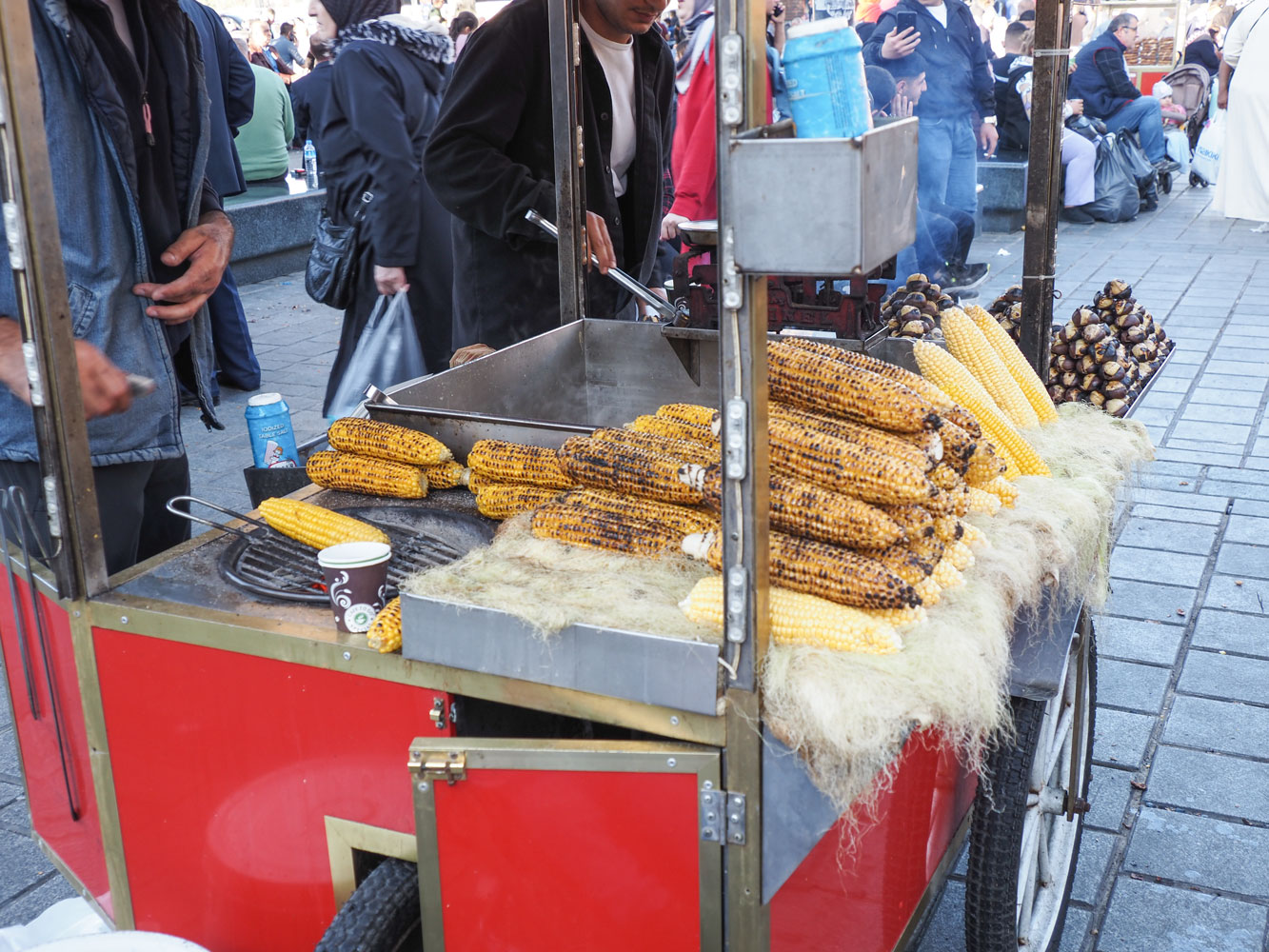
Along the side of the Spice Bazaar building was a row of pet supply stalls, selling all kinds of pet stuff, including pet food, harnesses, pet treats, etc. But this was the most interesting to us: they're selling leeches here. Leeches of all sizes, your choice.
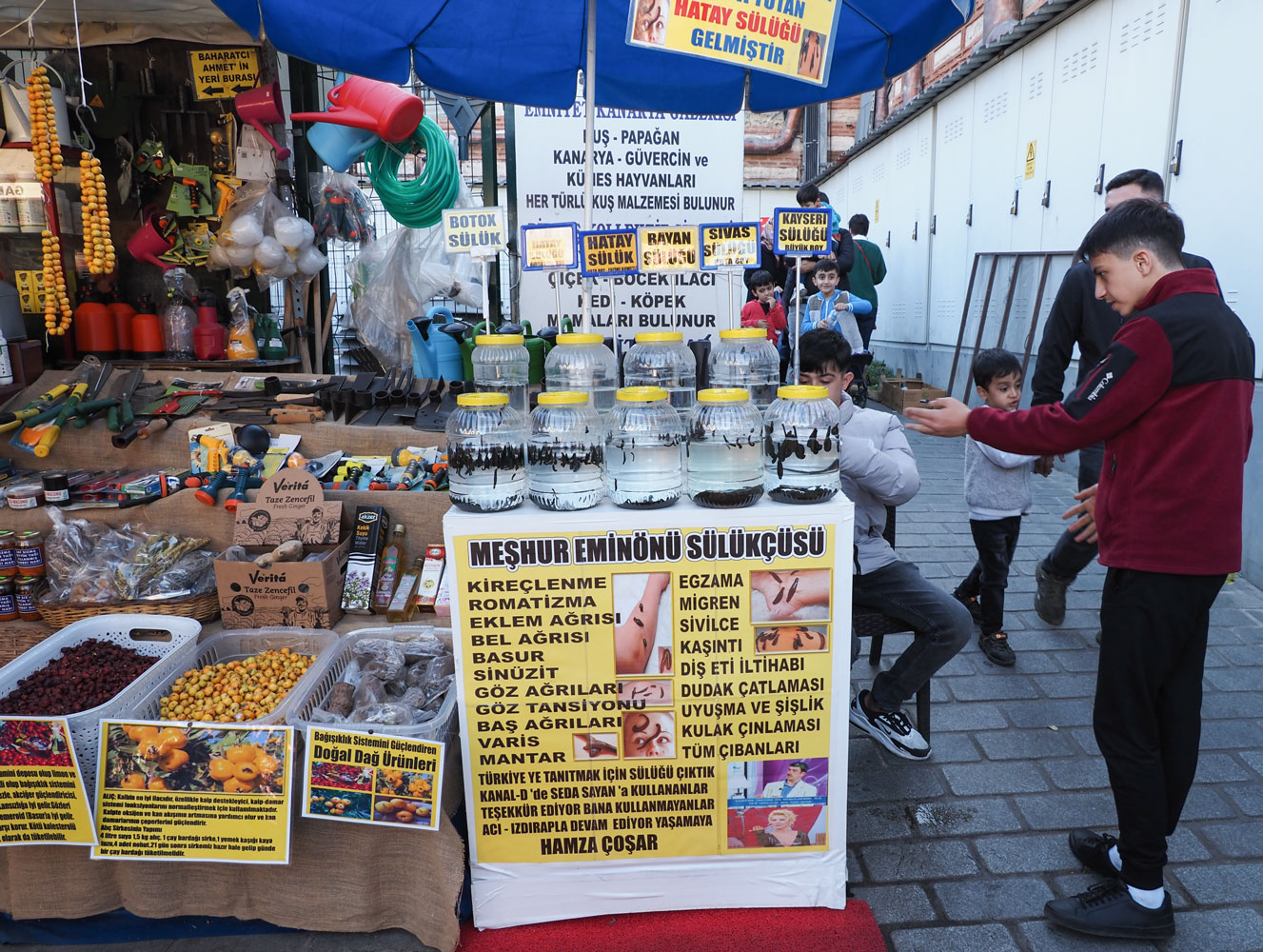
Judy took this picture of me in front of a store that was selling honey, in the comb. It's the round containers next to the boxes.
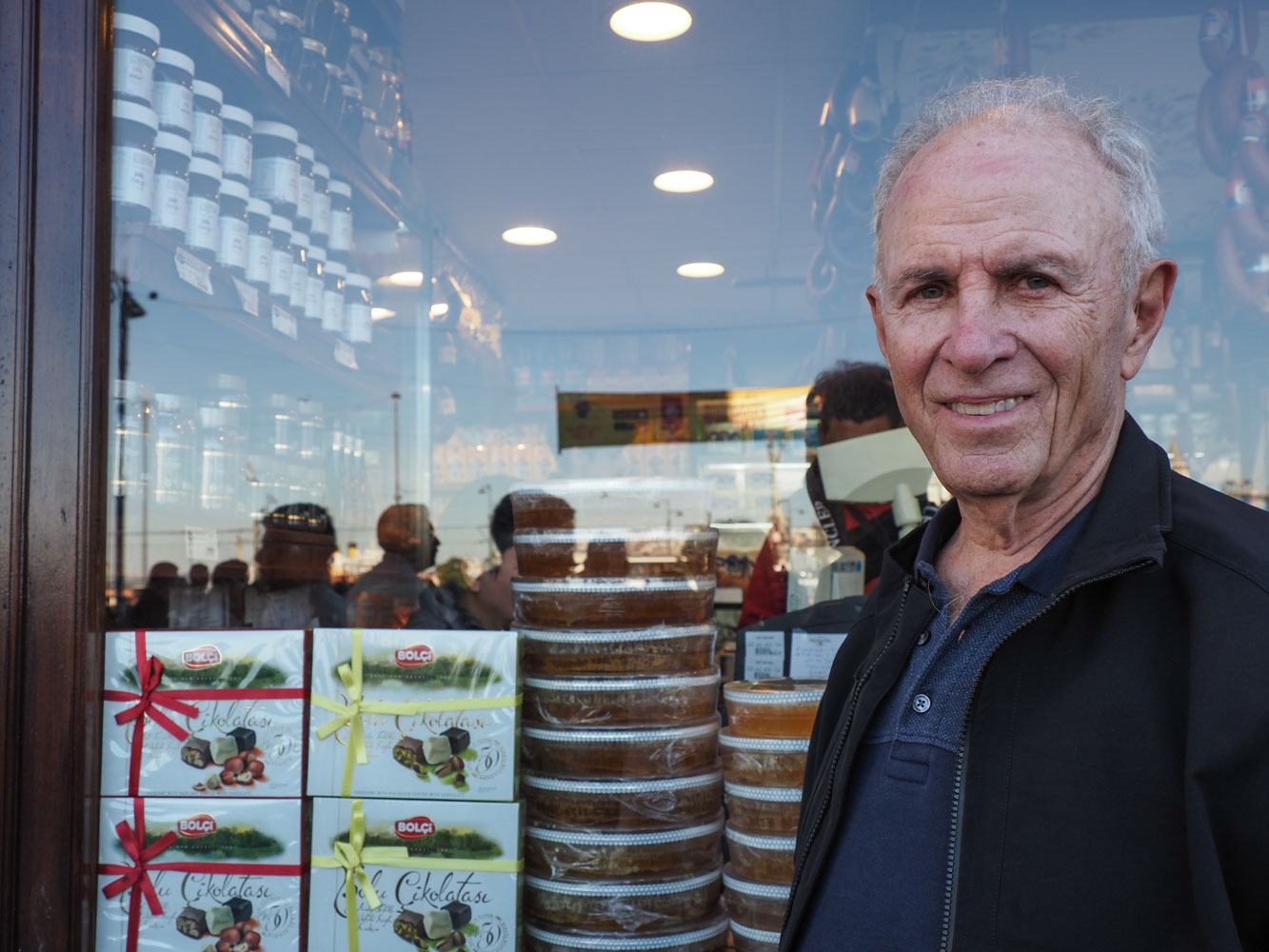
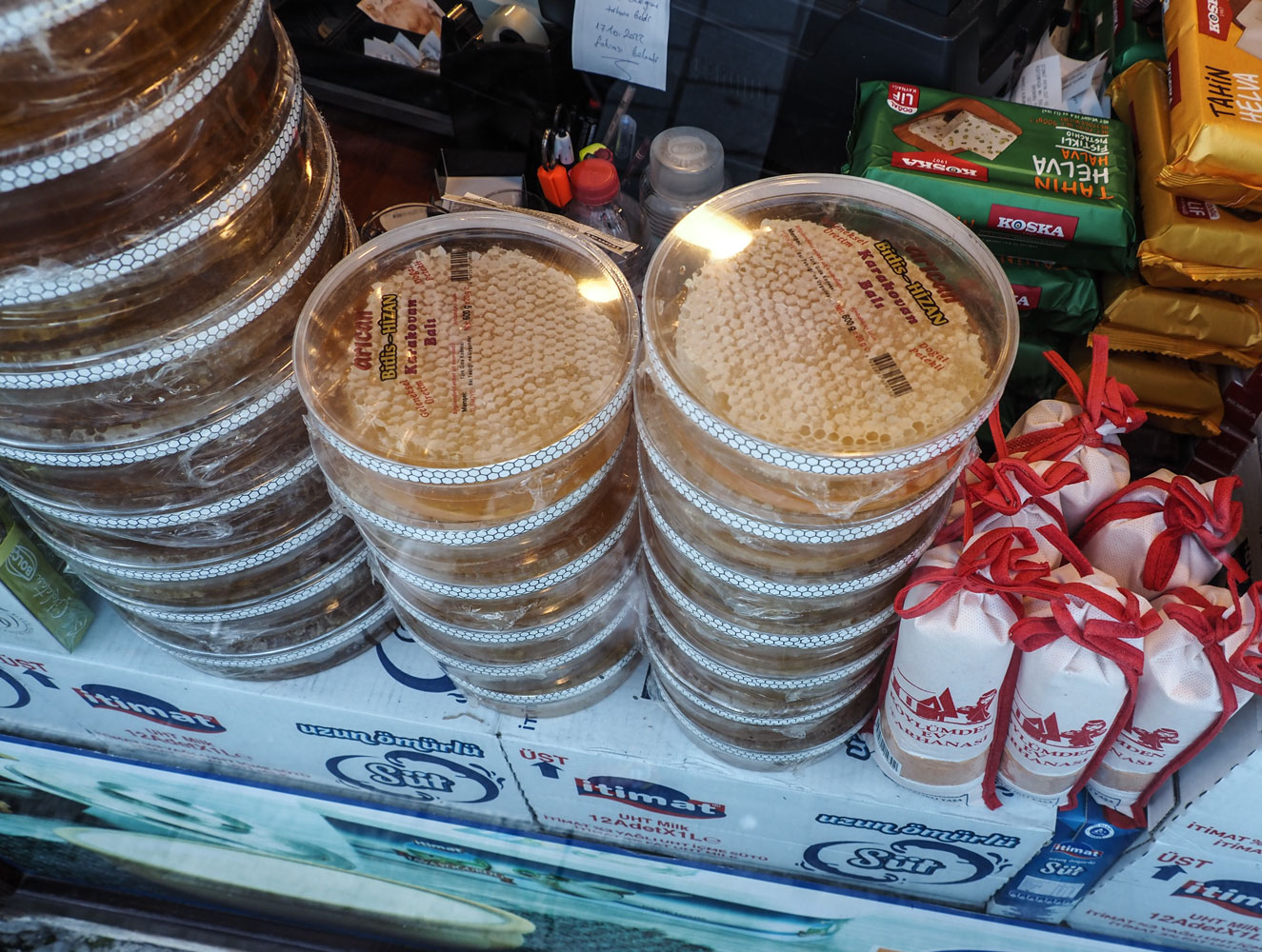
By now, we were tired and we were glad to be heading back to the hotel. That evening, Judy noticed a ship coming into the Bosphorus that looked like a Regent ship. I used the long lens on my camera, and sure enough, it was the Explorer. We watched it turn towards us and go to the dock.
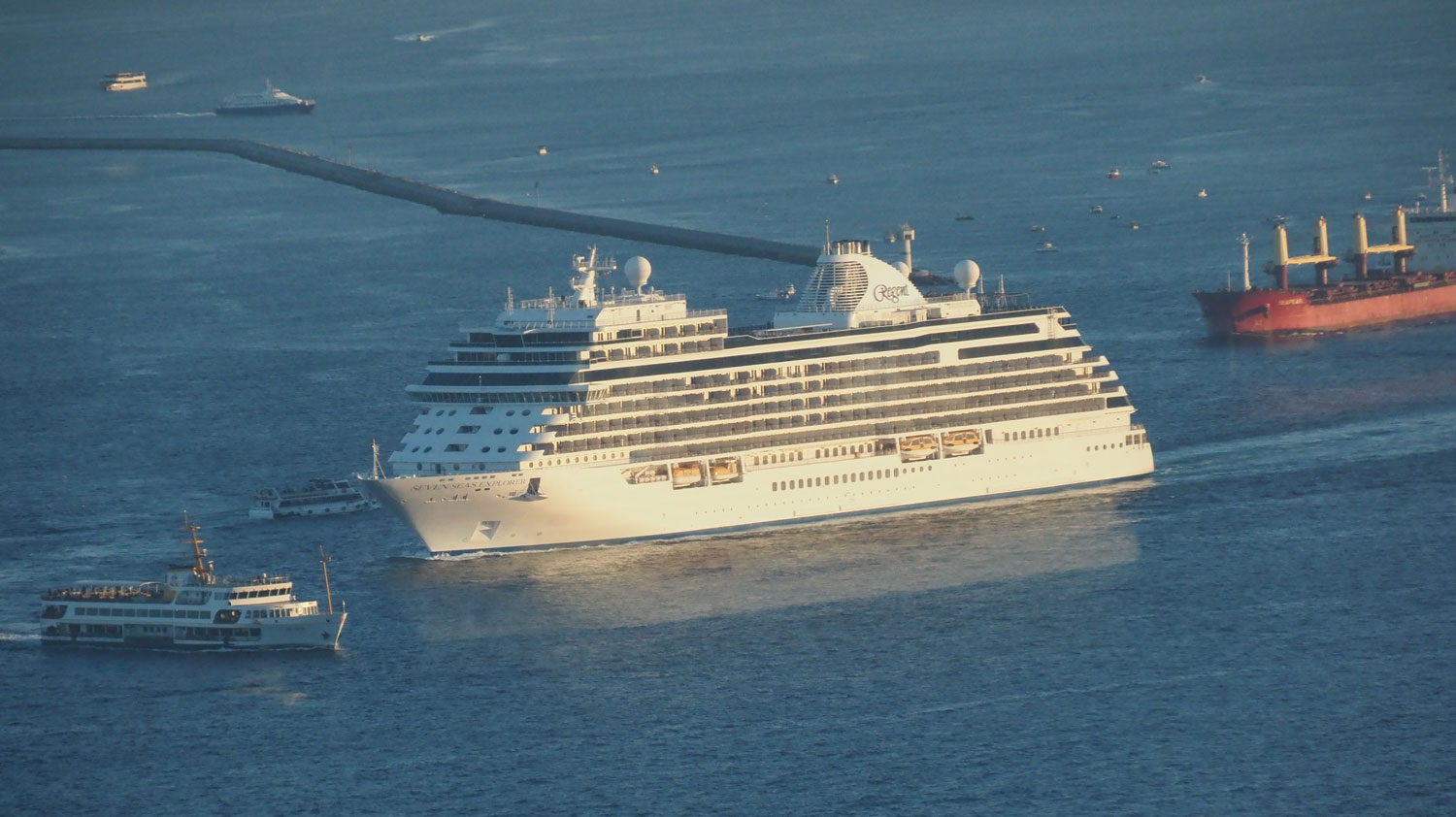
We had a light dinner in the hotel and went to bed. We were not at all time adjusted yet, and it had been a full, tiring day.